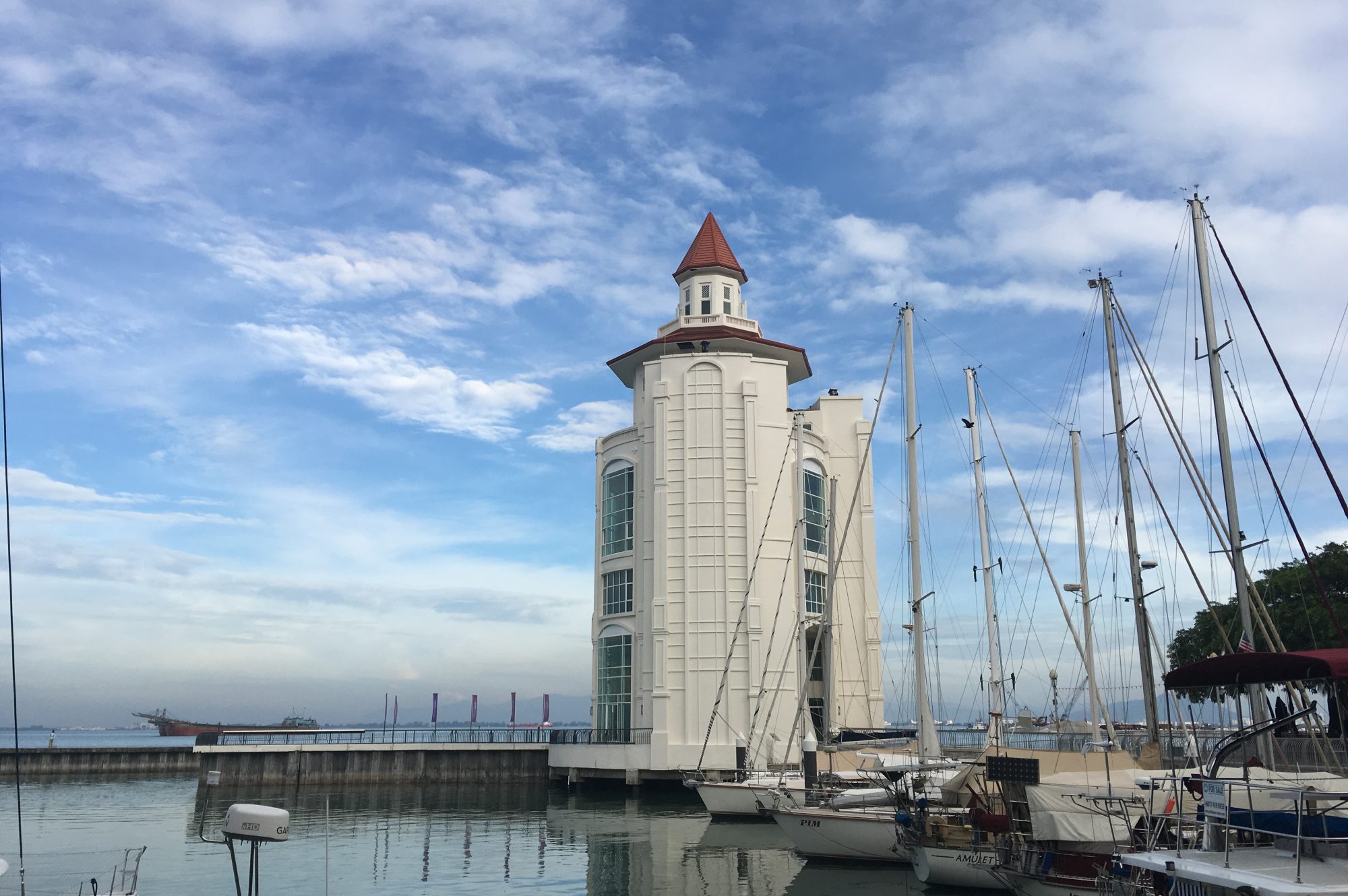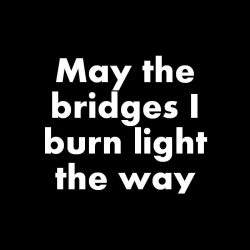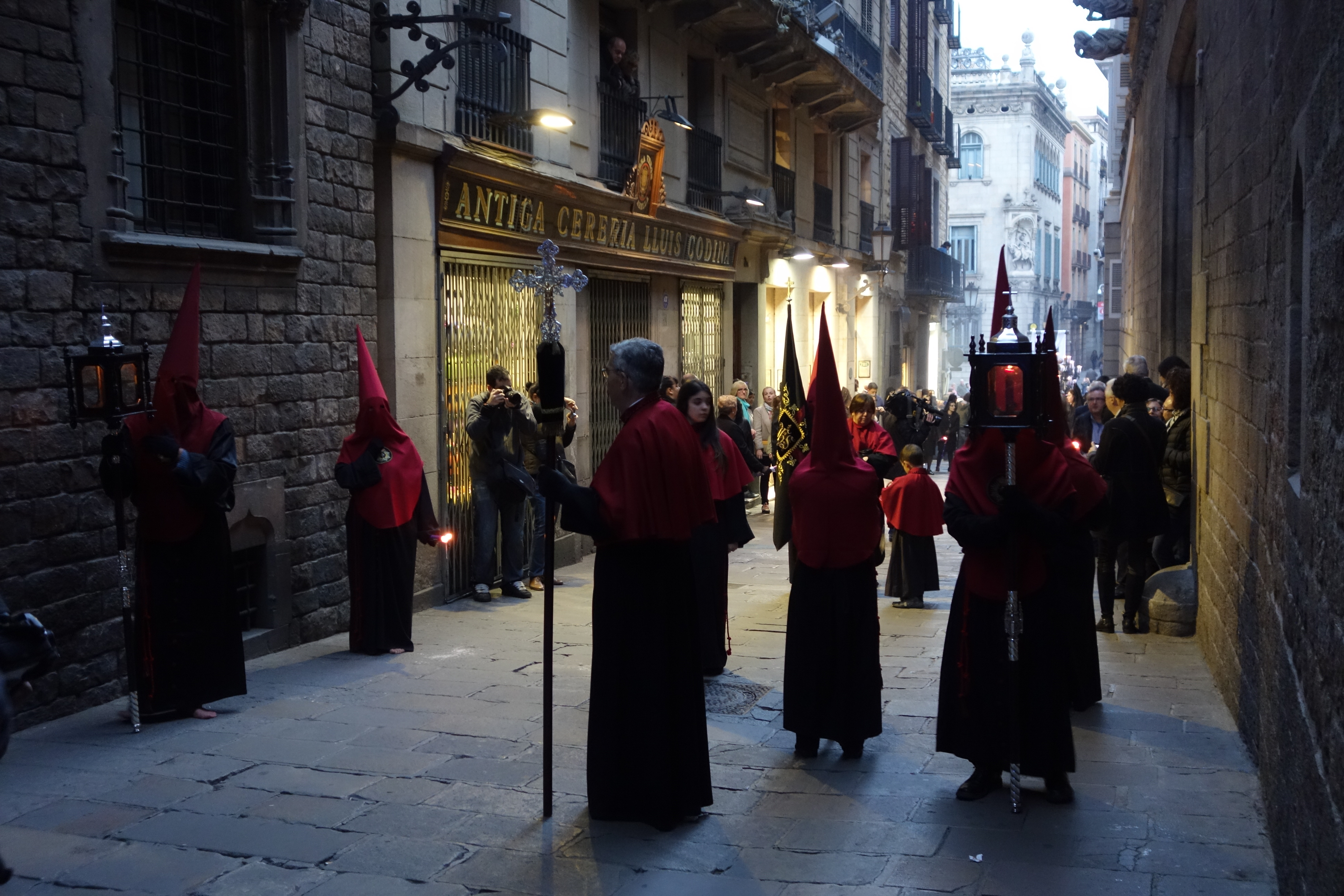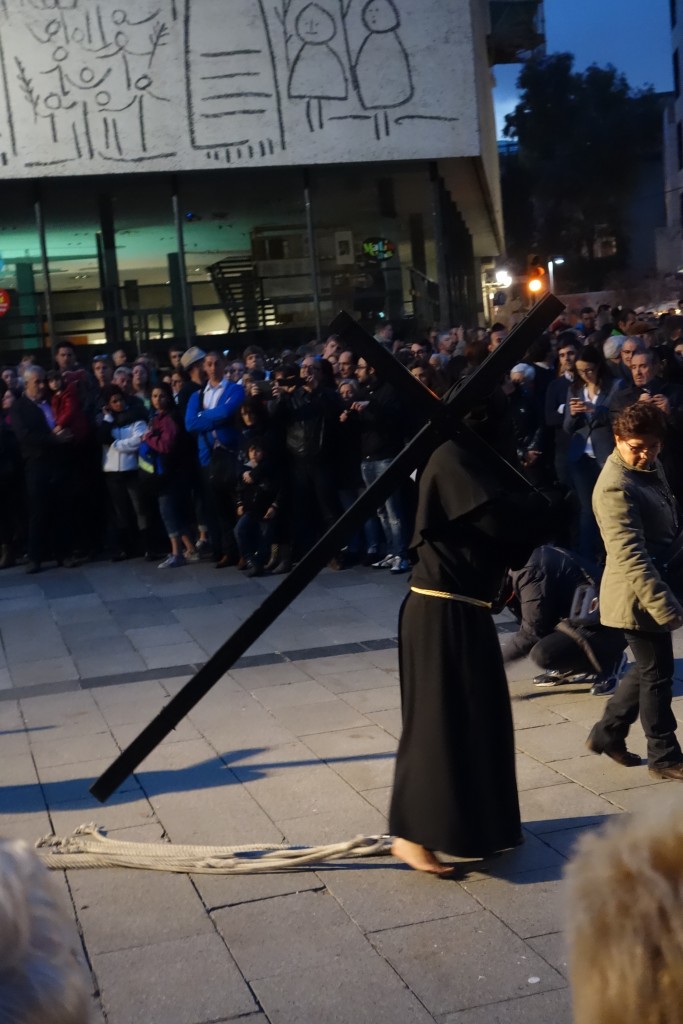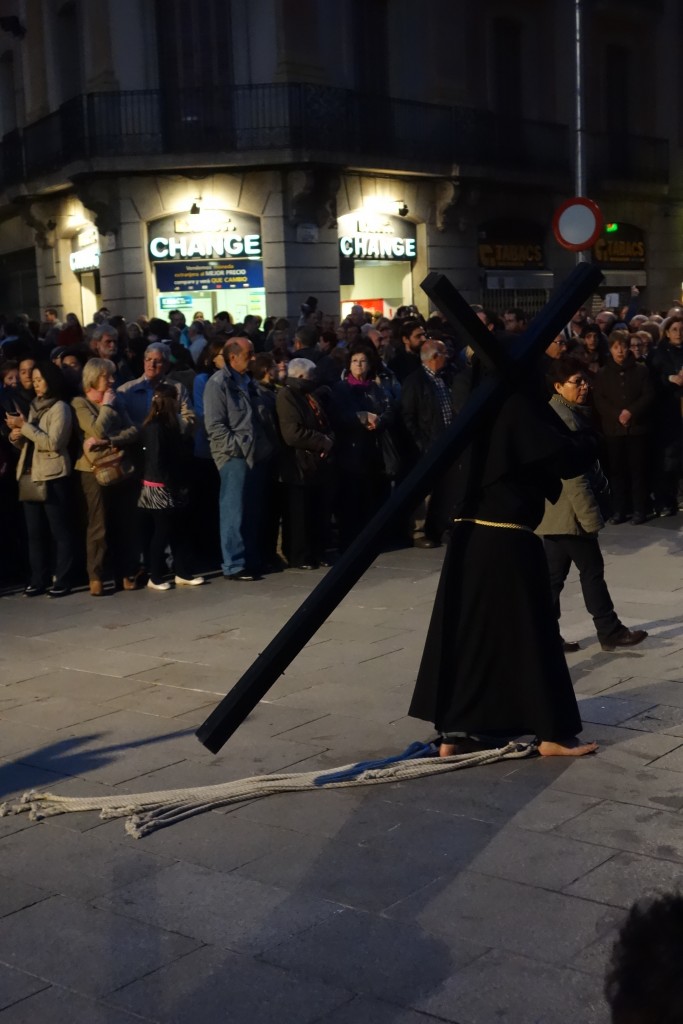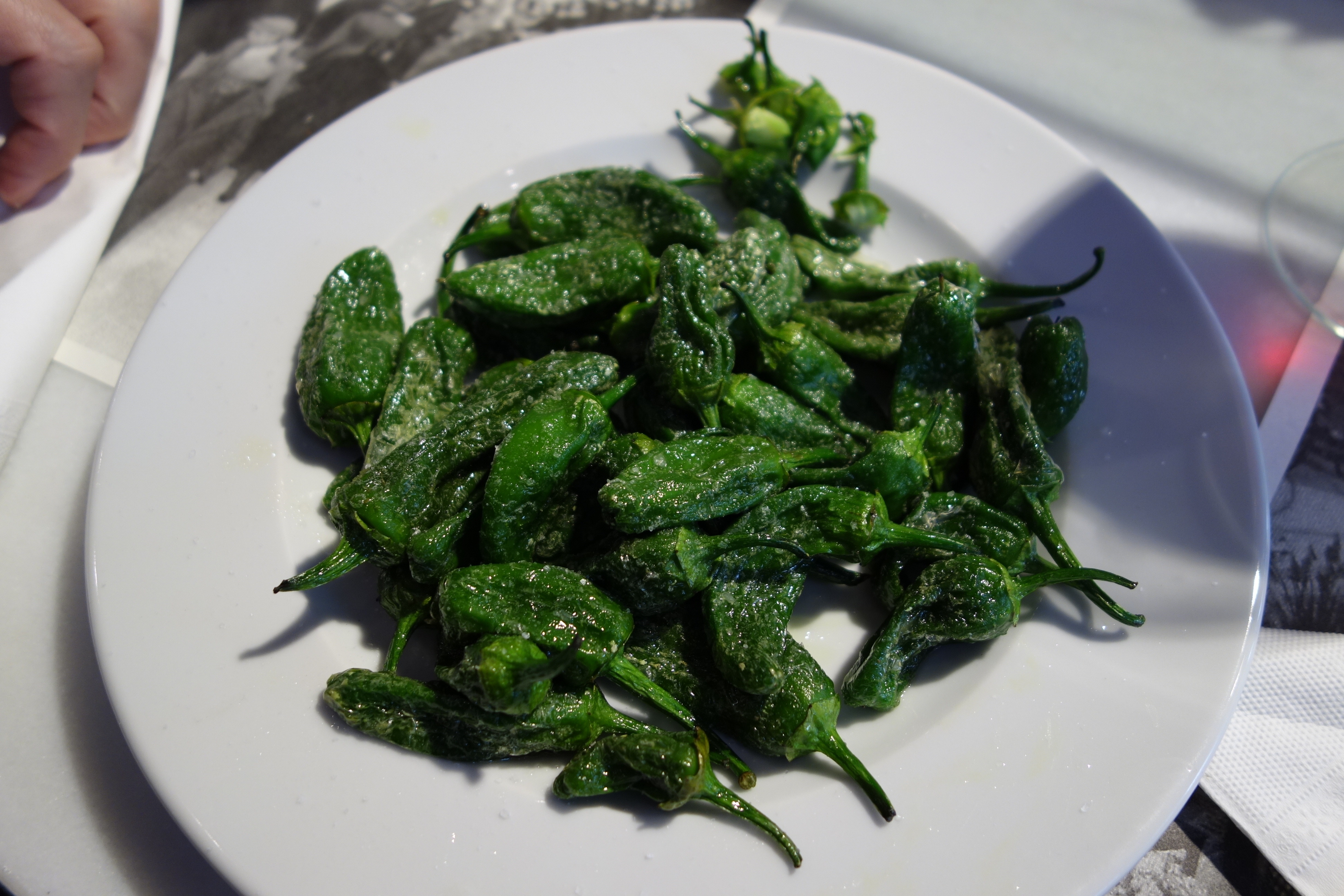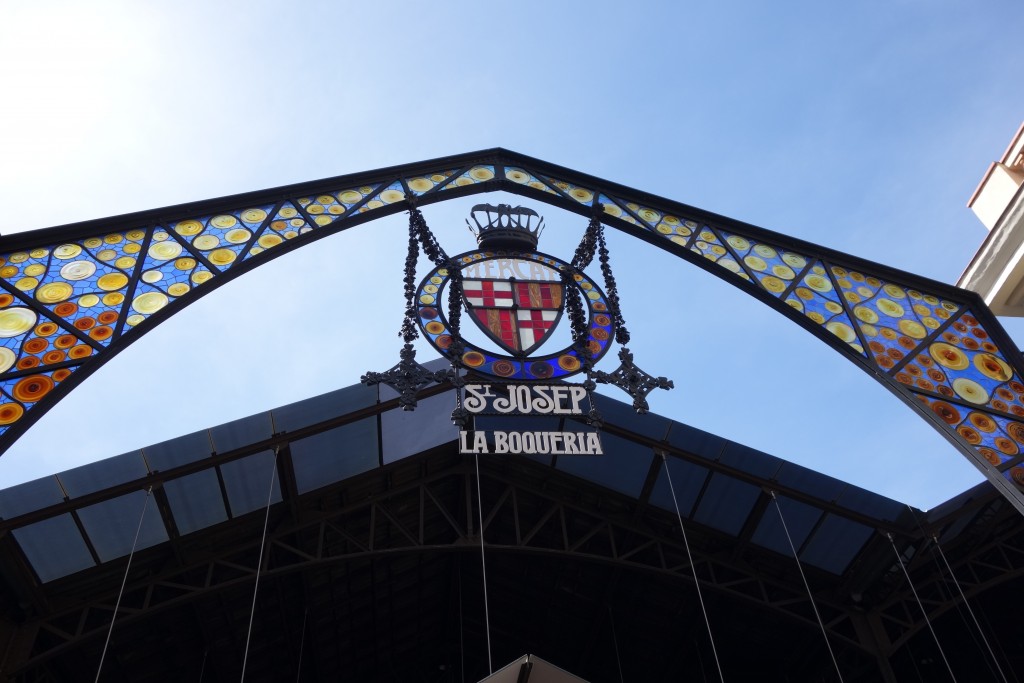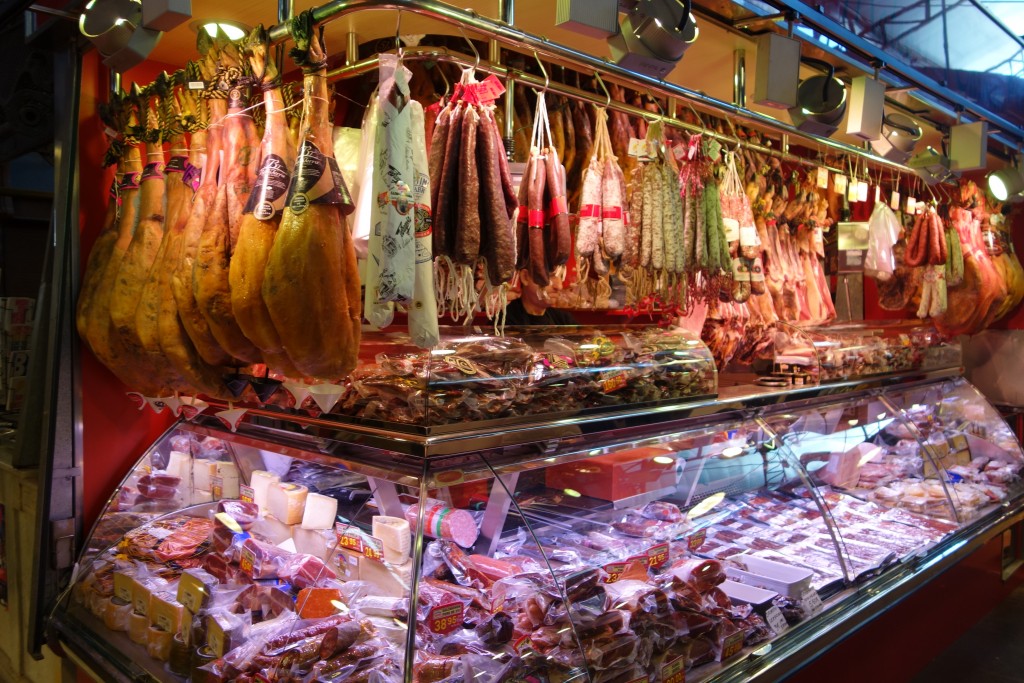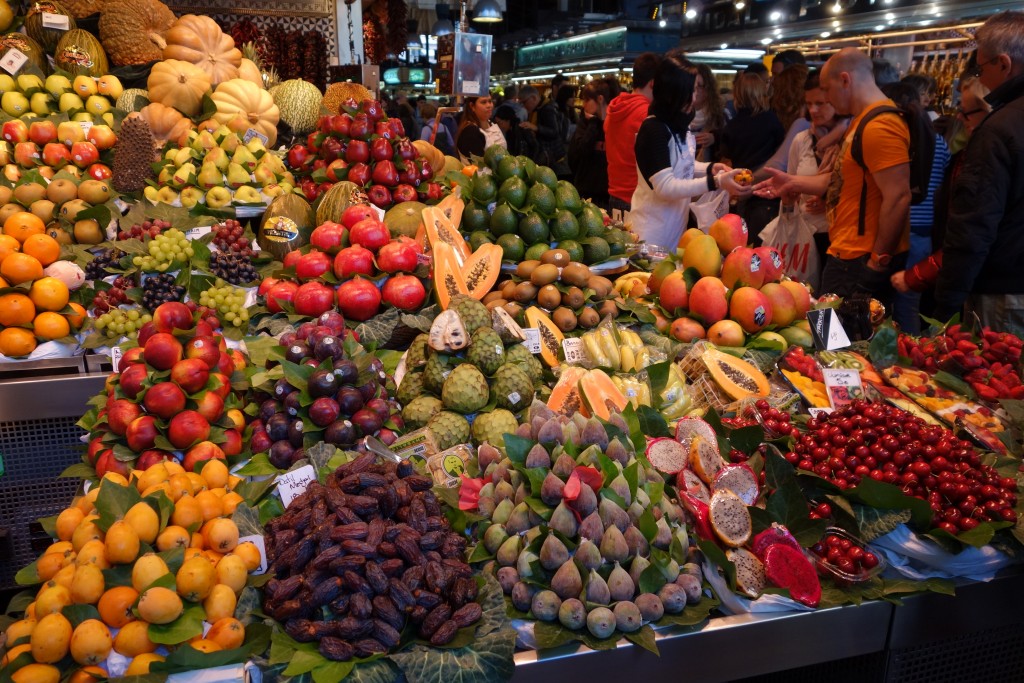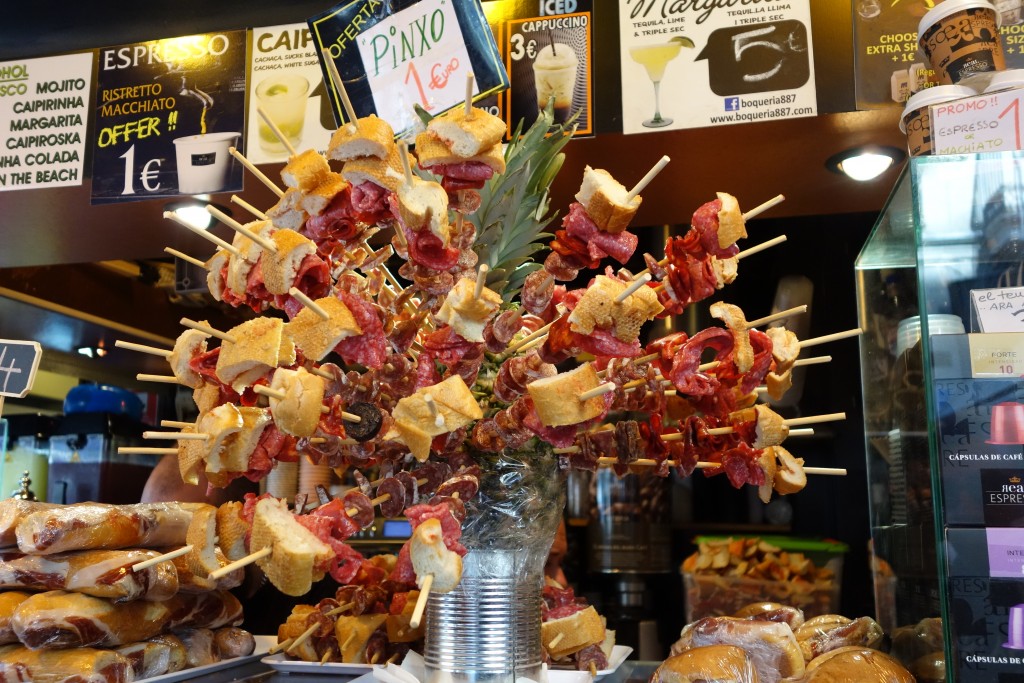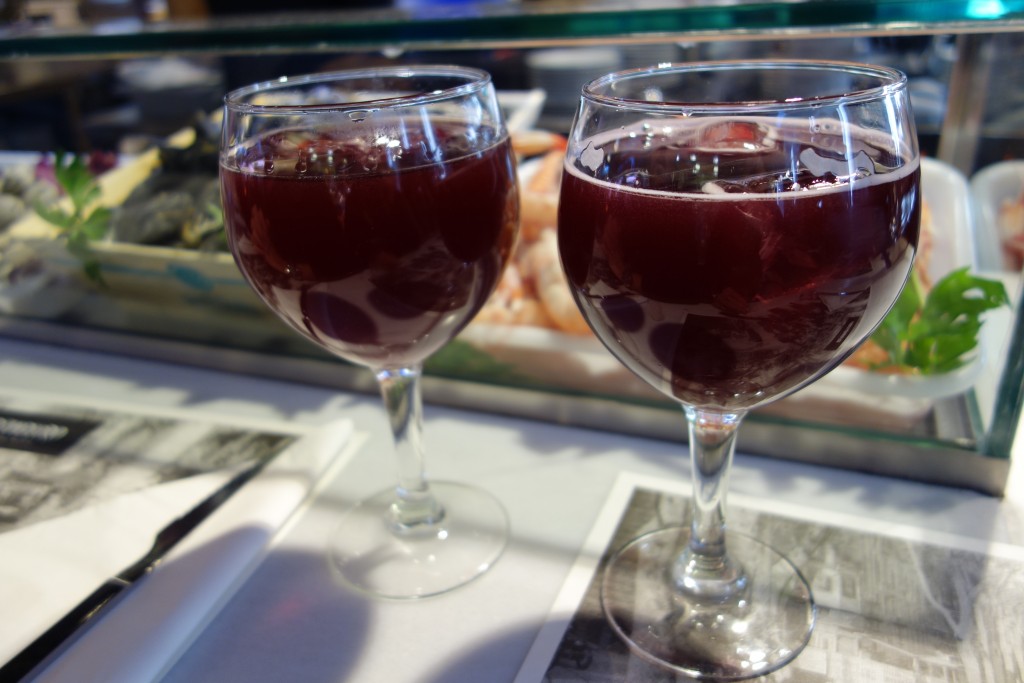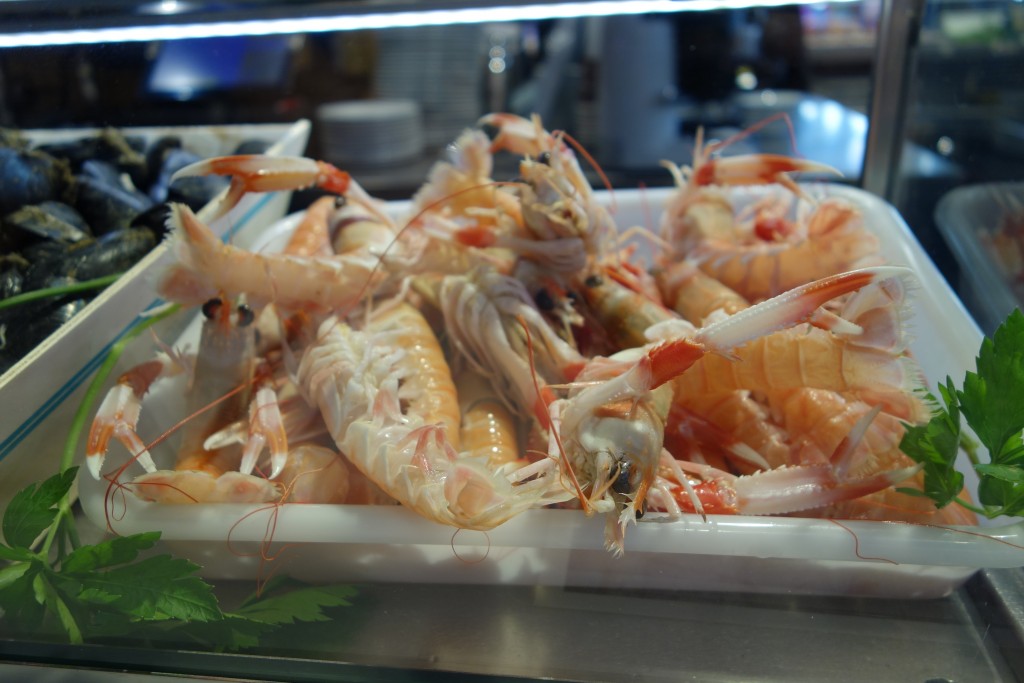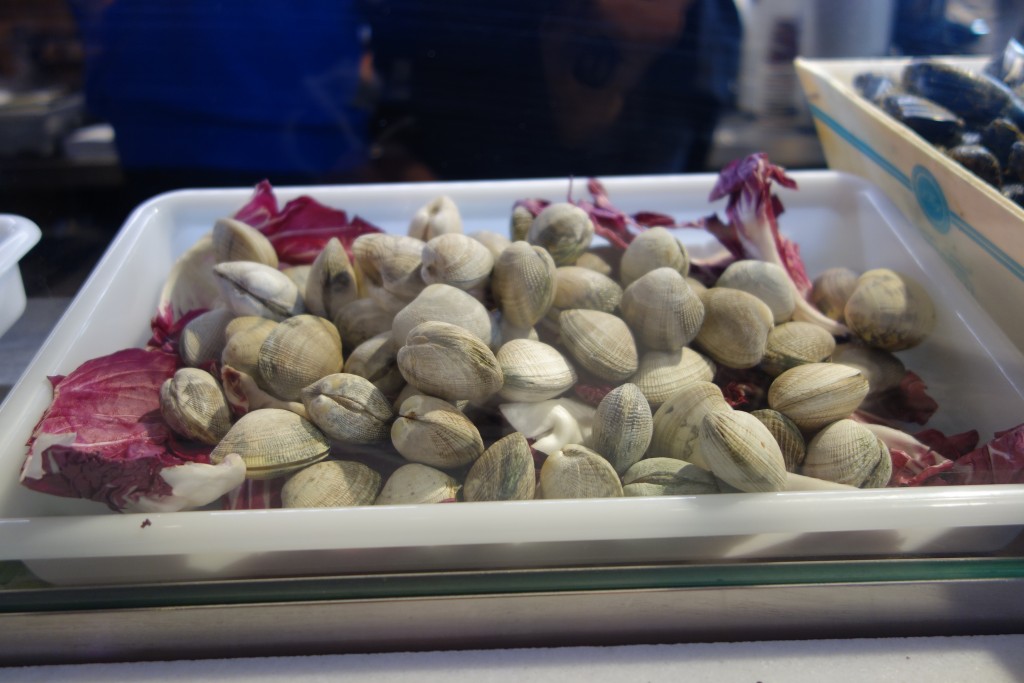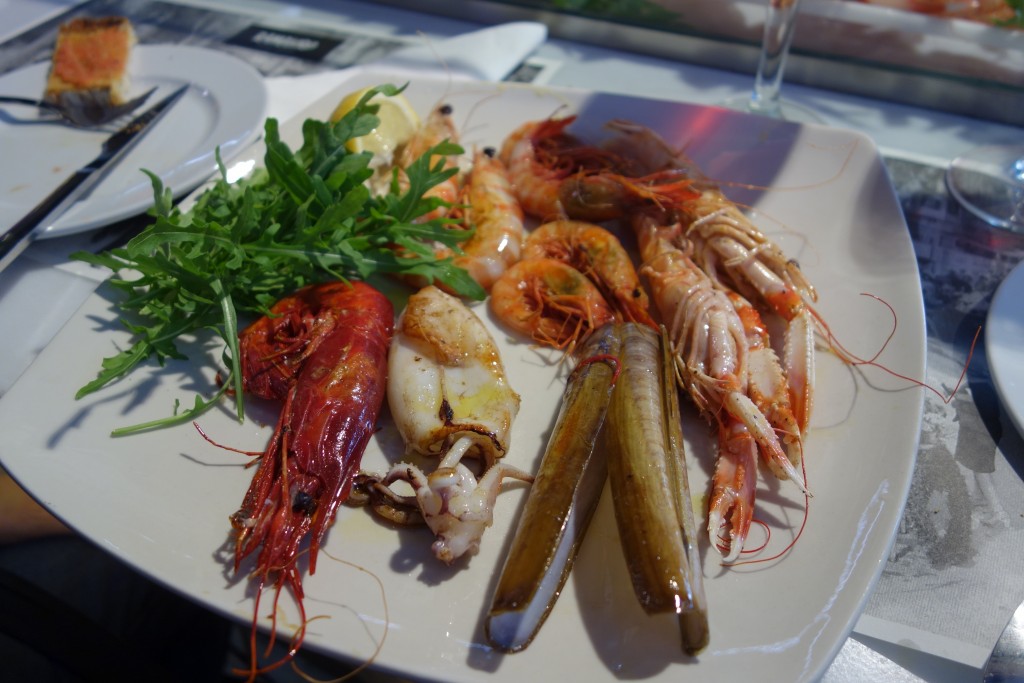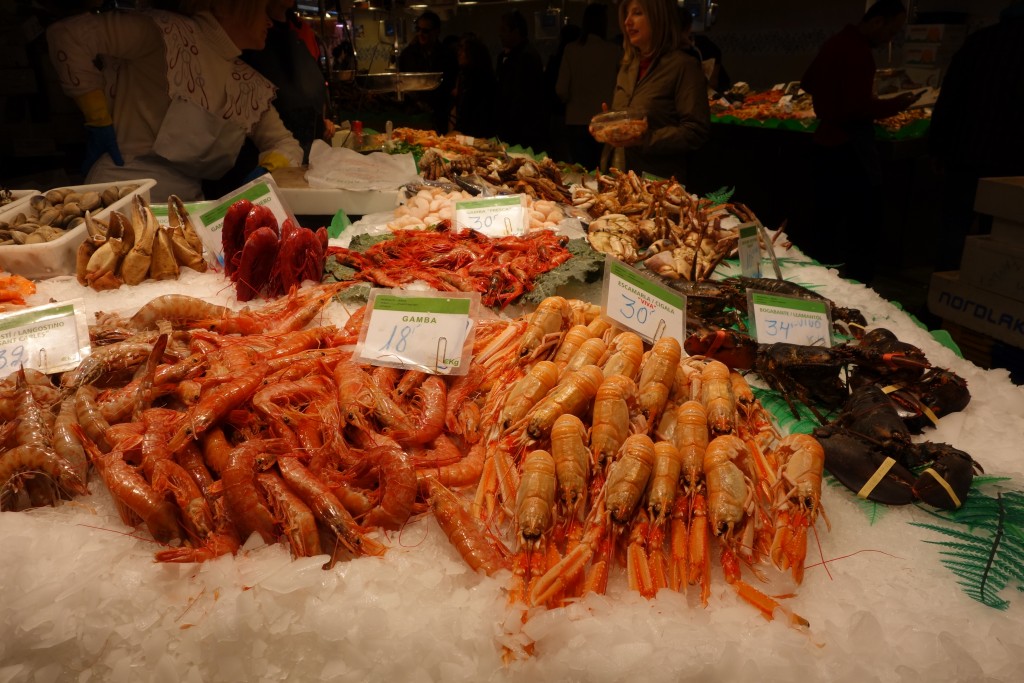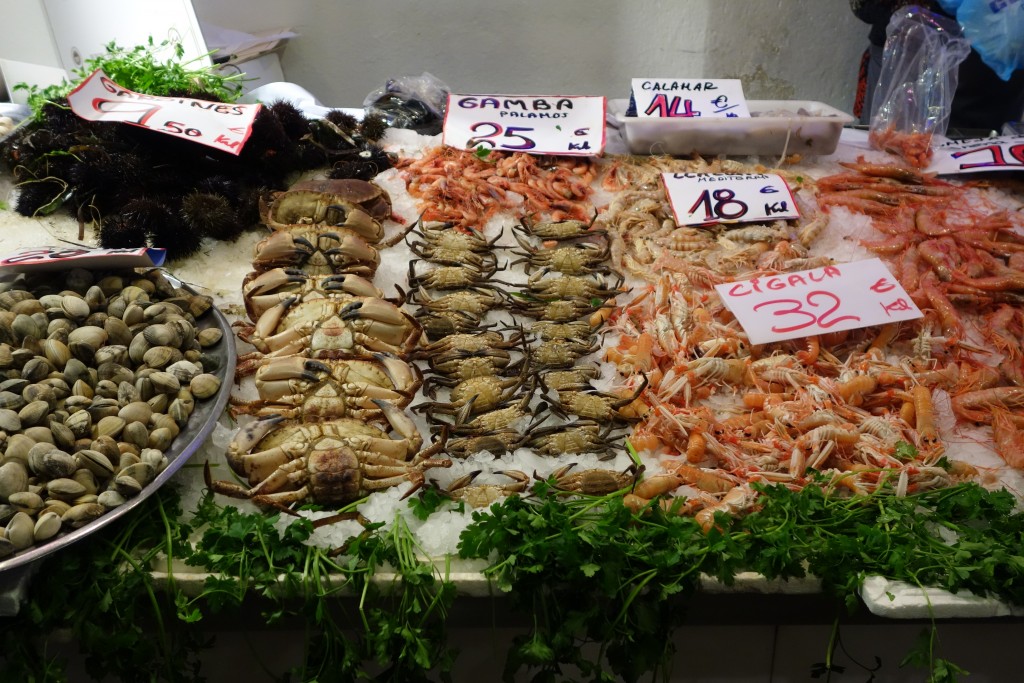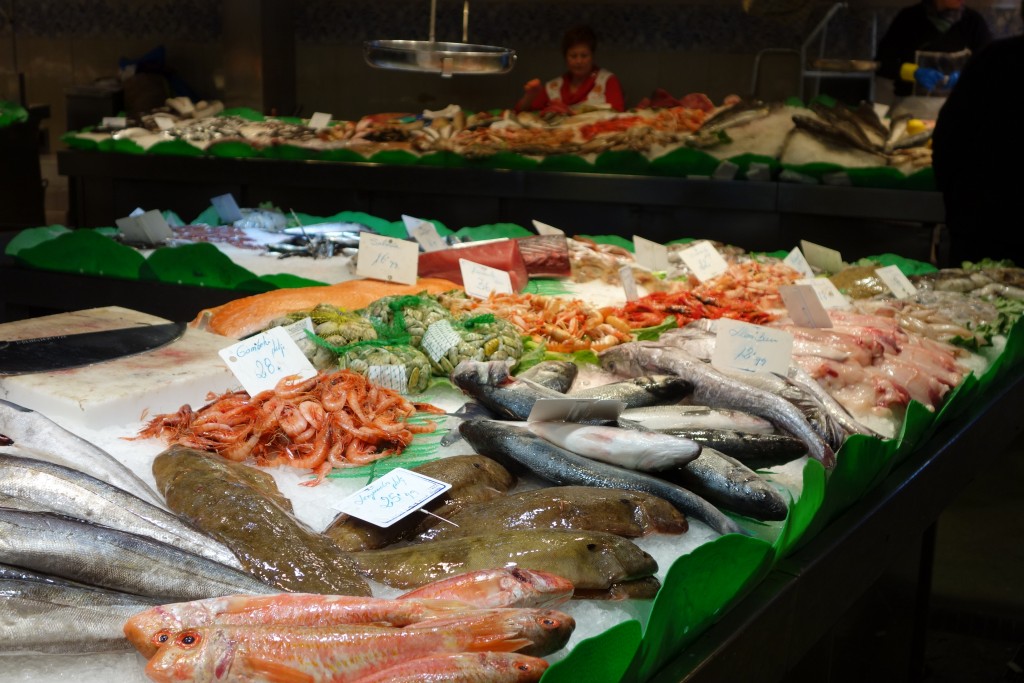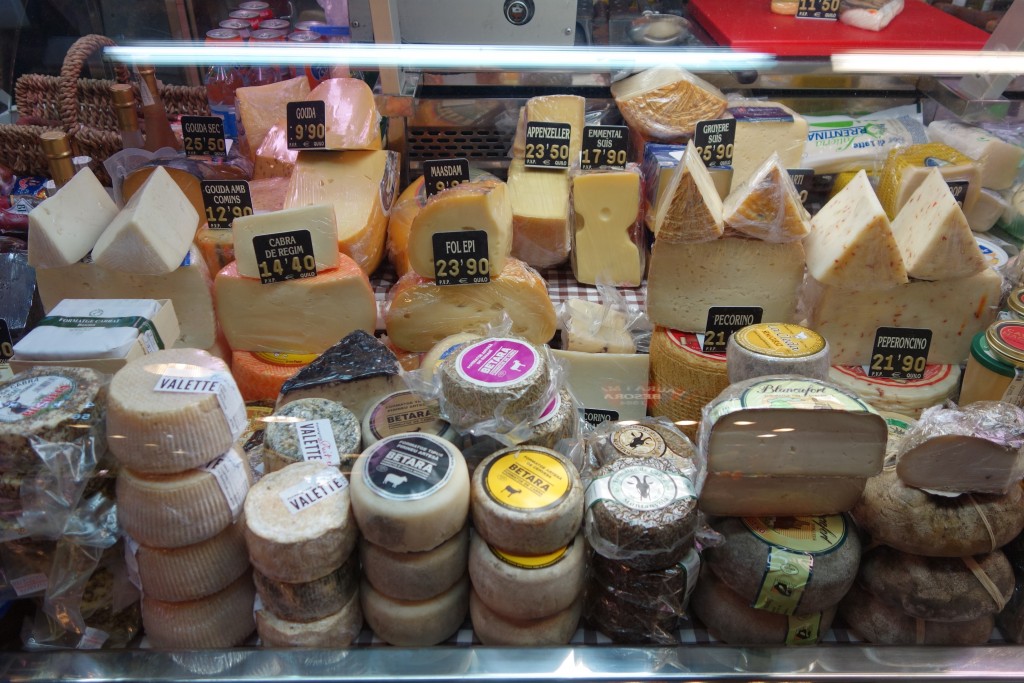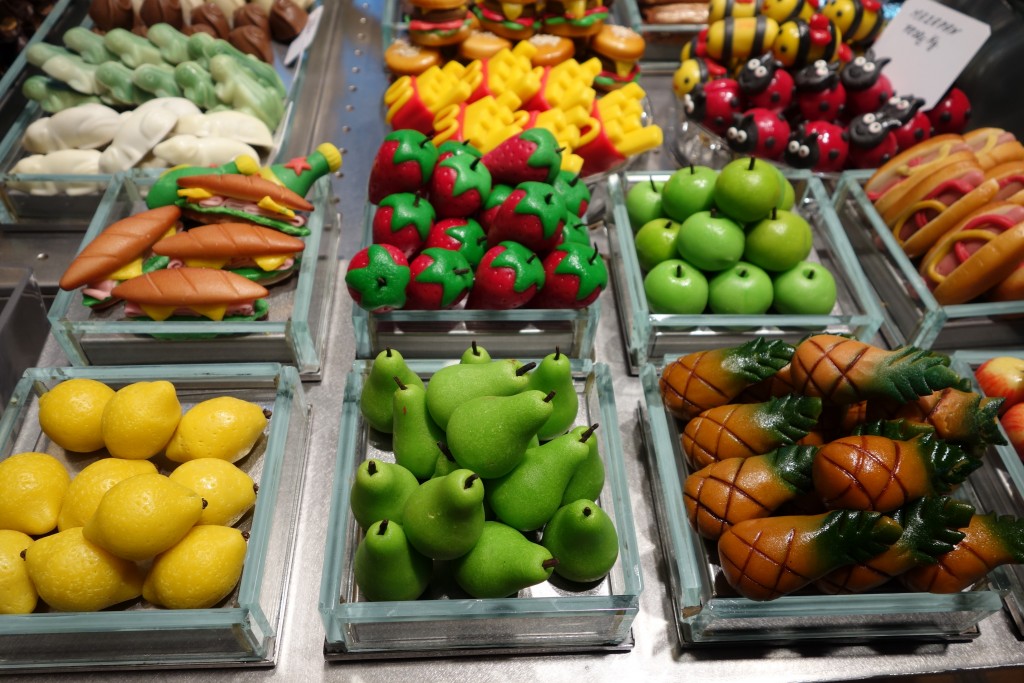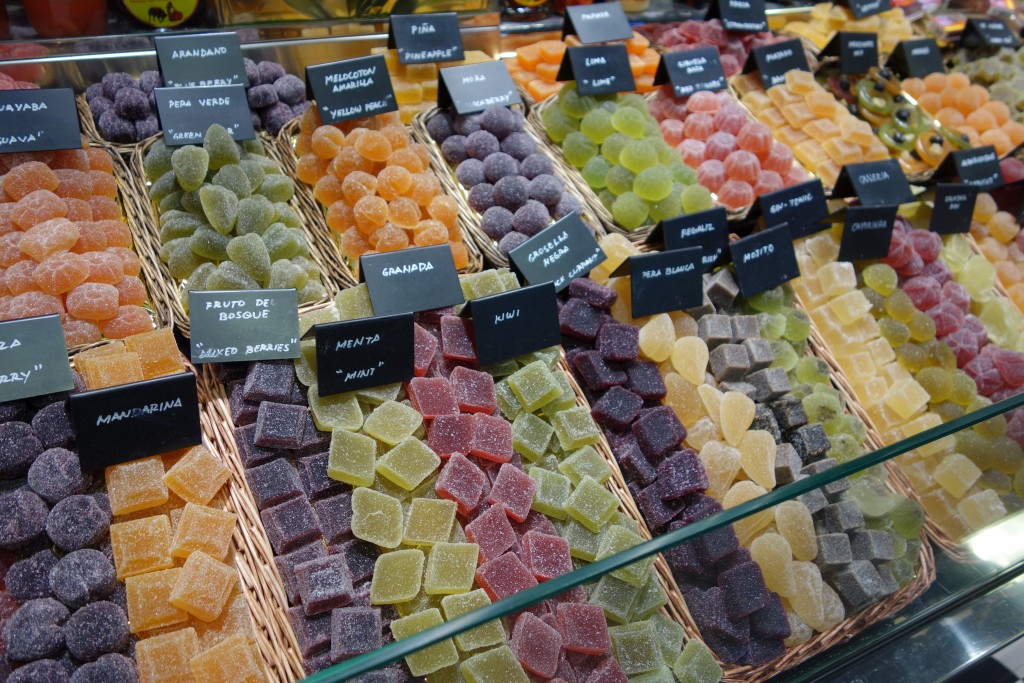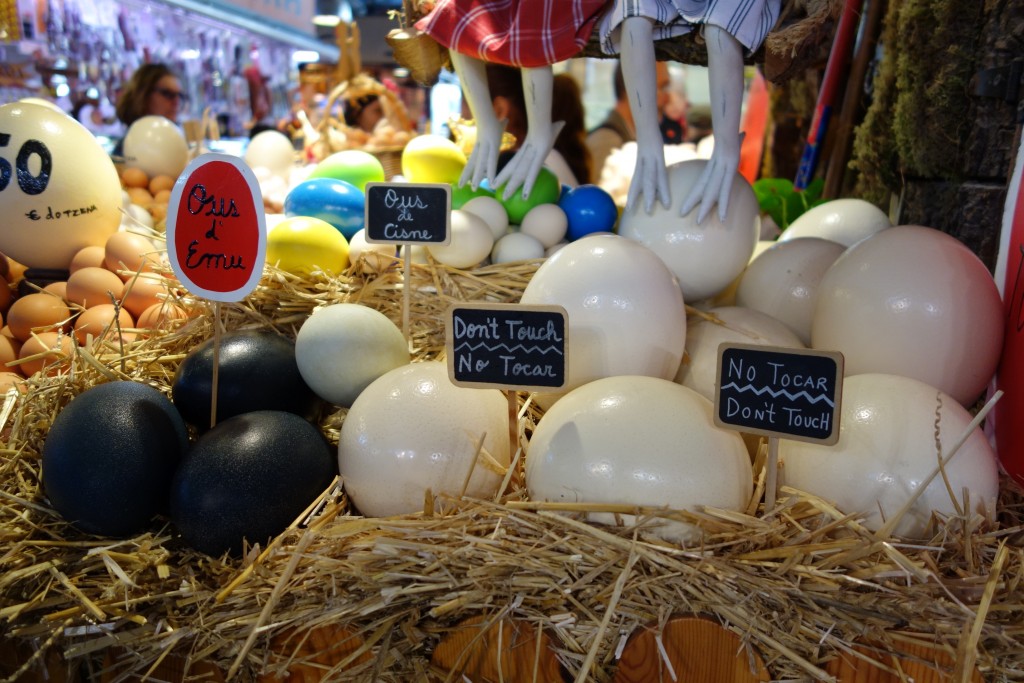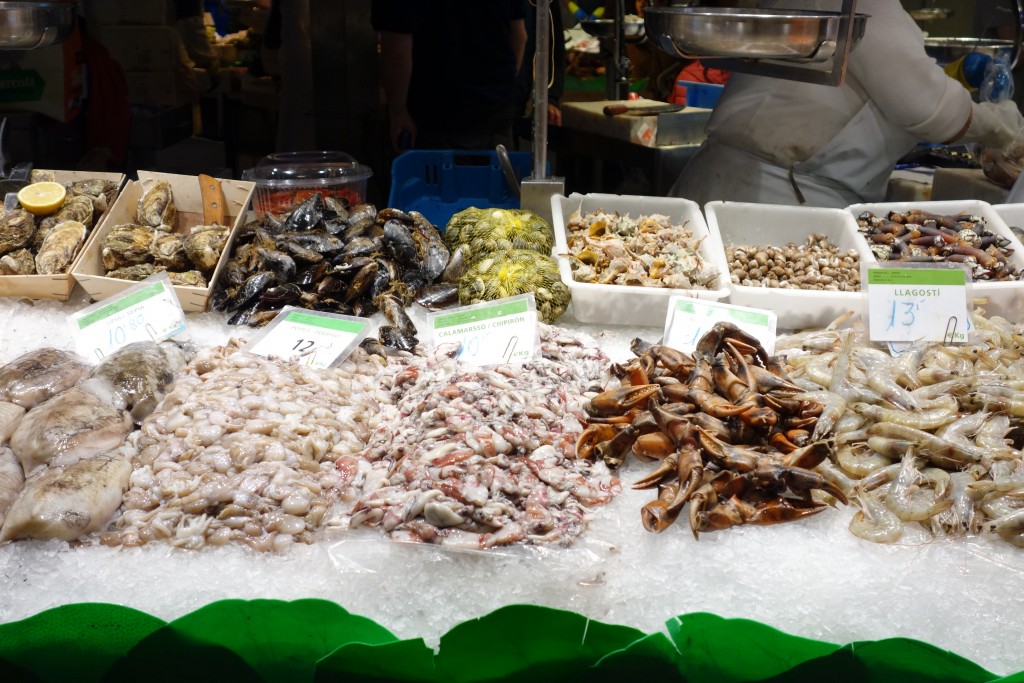Inspired by the previous day’s serendipity with the market, we were intent to catch up on the sightseeing program. Reconstructed from memory, today’s agenda had Park Guell and Sagrada Familia on it – two of Barcelona’s main landmarks created by the visionary architect Antoni Gaudi.
We took the underground and climbed the hills to Park Guell (and, shit, was there climbing involved! The park lies on top of some really steep hills, and even though some of the streets leading to it were equipped with escalators, the climb was not for the weak or faint-hearted!). Catching our breath on the way, we came face to face with the first queue of the day: about a hundred people were lining up for entry tickets, and the welcoming sign at the door announced that tickets being sold were valid for entry 3 hours from now. After short contemplation, we weighed our options and turned away, deciding to try our luck the following day, and booking said tickets online.
Heading back into town, we read up on the possible itineraries, and found a day’s architectural walk through downtown, starting at Sagrada Familia. Nic had his mind set on the place, as, technically, this was the main reason for our choosing Barcelona as our next destination in the first place. I had only vague memories of the whimsical cathedral from my first brief acquaintance with the city, and was also curious to explore it in more detail. Turned out, both our hopes should not have been held too high. Upon arrival we faced yet another queue, coiling like a big fat snake all the way around the cathedral, and looking pretty desperate. To add to the disappointment, two of cathedral’s eight towers were completely covered with scaffoldings – either being built, or renovated. Sagrada Familia is a work in progress, stretching over a hundred and thirty years, and still not anywhere near the finish line. The fact that the original Gaudi’s designs were burned in the fire a while ago, and had to be reconstructed by all means and imagination possible, did not speed up the process. Still, looking at this unfinished masterpiece, one cannot help but admire the genius mind that imagined it. Even with the existing 8 towers the building looks humongous, but the original design called for 18 (!) When (and if) all 18 are finished, Sagrada Familia will be the tallest church in the world.
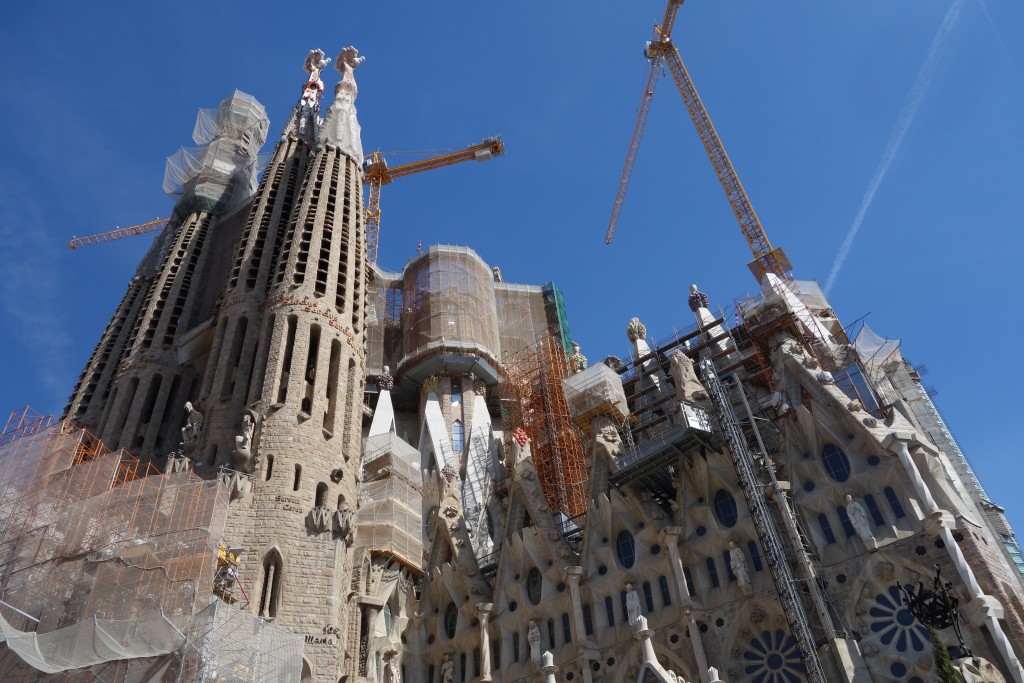
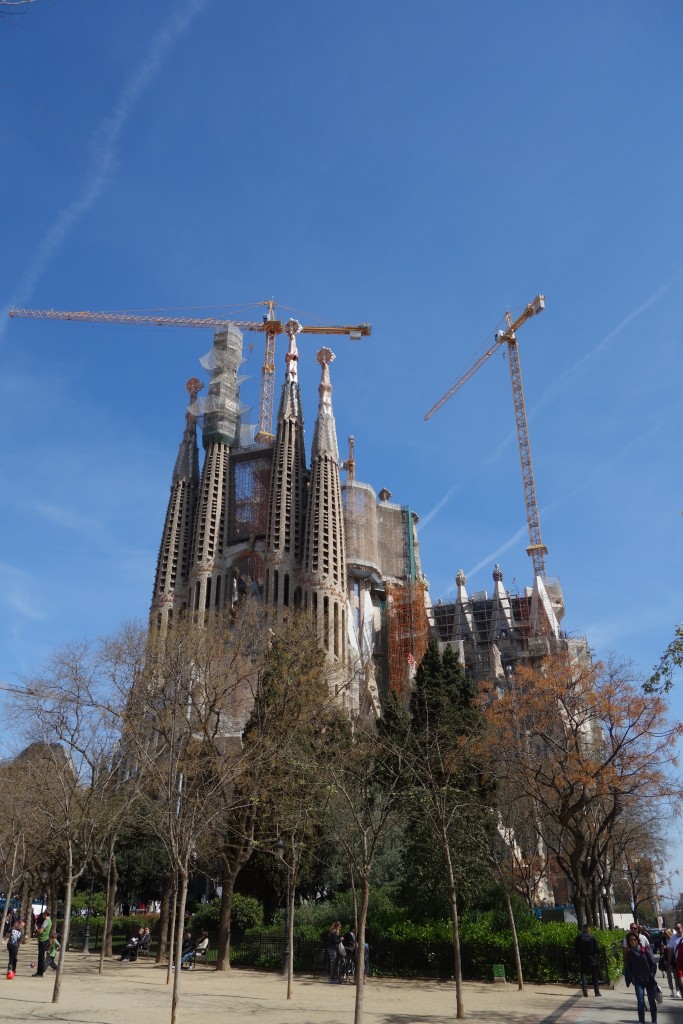
Having admired the masterpiece in progress from the outside, we ventured off on our foot walk through the architectural downtown. Much to our amazed satisfaction, not only did the buildings mentioned in the Lonely Planet exit, but they actually were worth looking at, and could well compete with the publicly known tourist attractions. We went past a string of amazing art nouveau buildings, randomly scattered through downtown Barcelona – each a more unusual projection of architectural grandeur of the century.
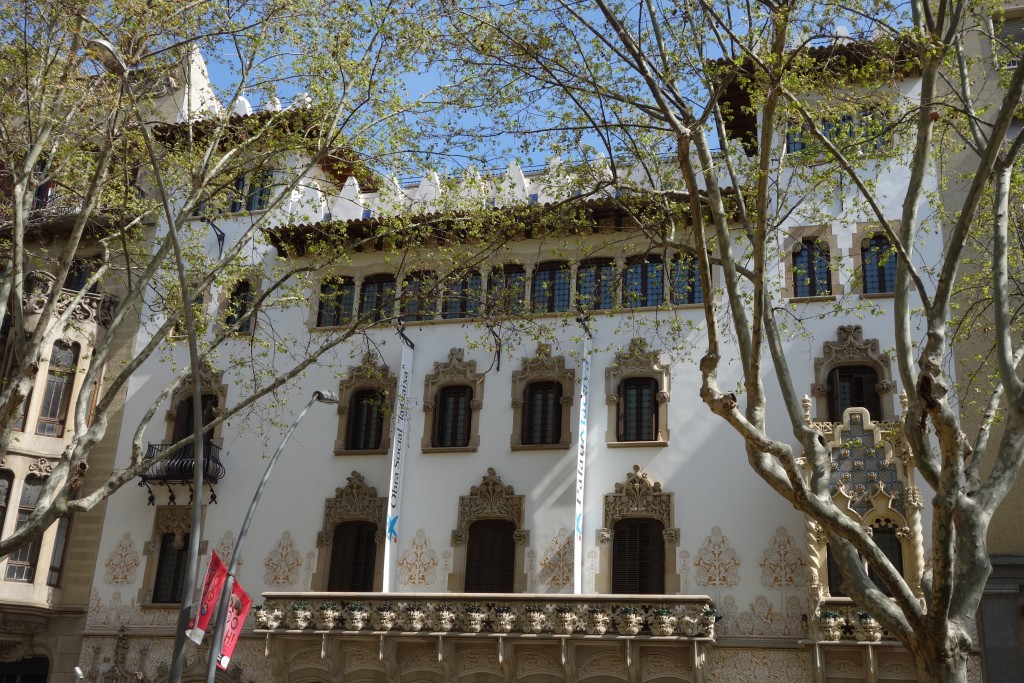
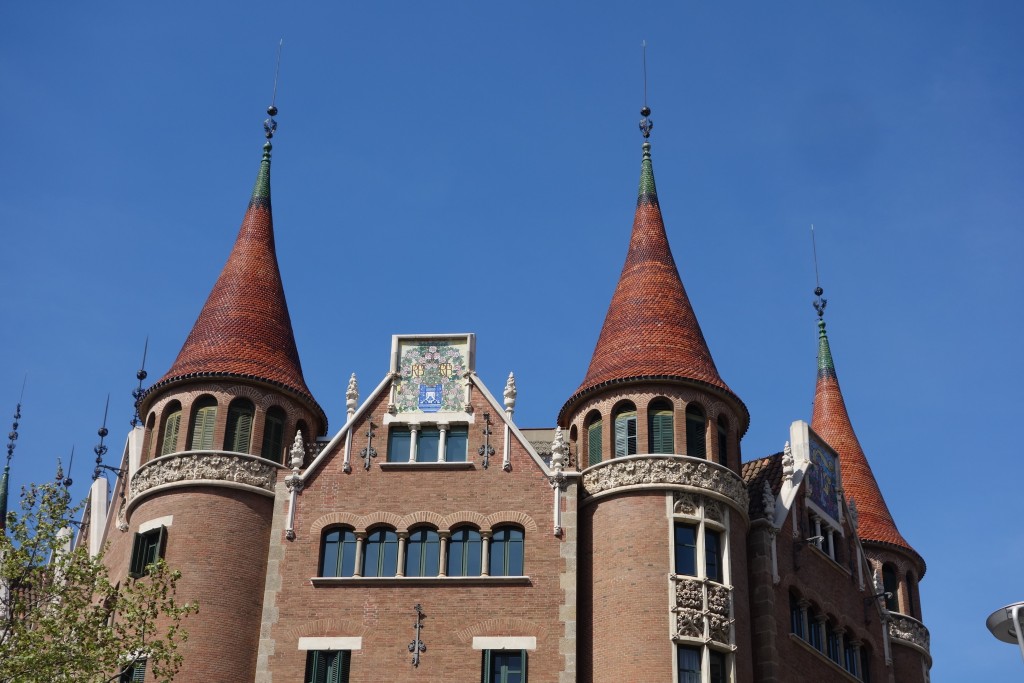
Casa de les Punxes 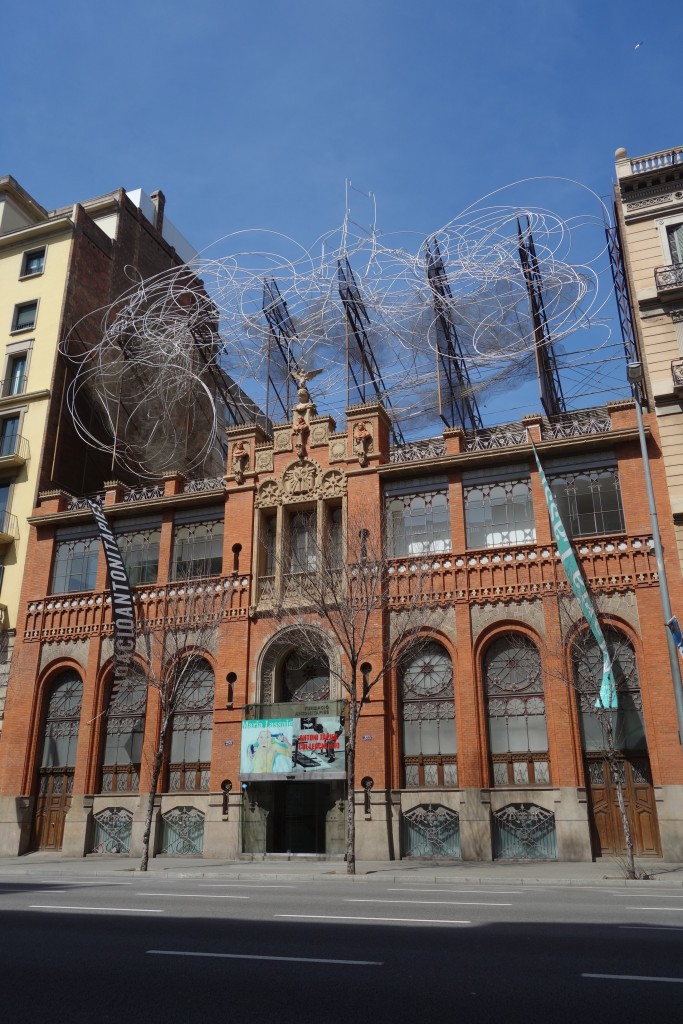
Fundacio Antoni Tapies 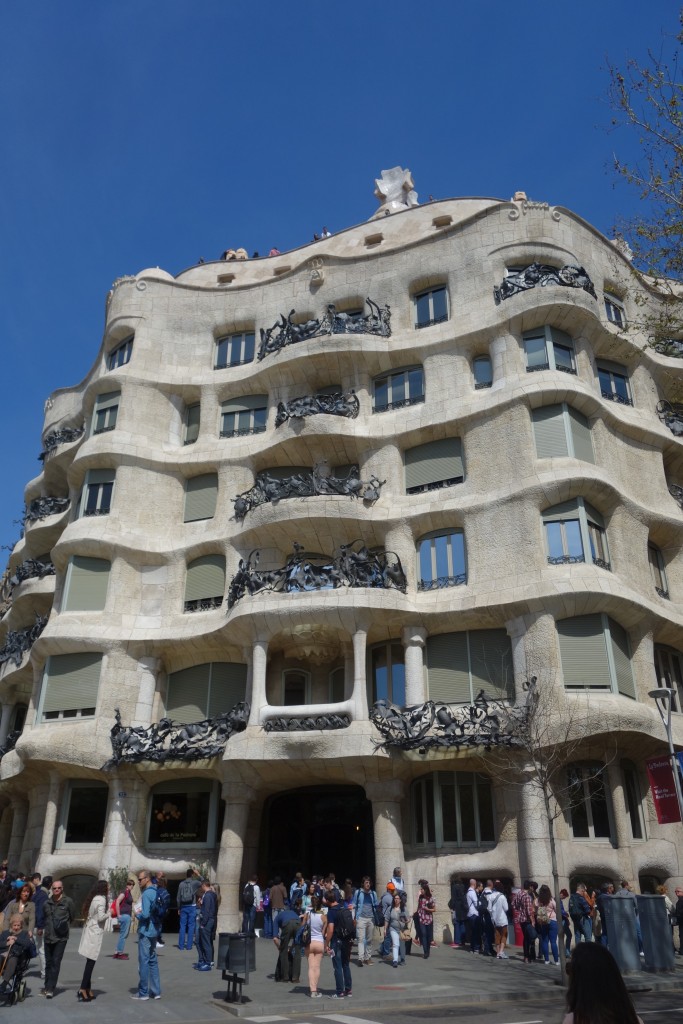
La Pedrera 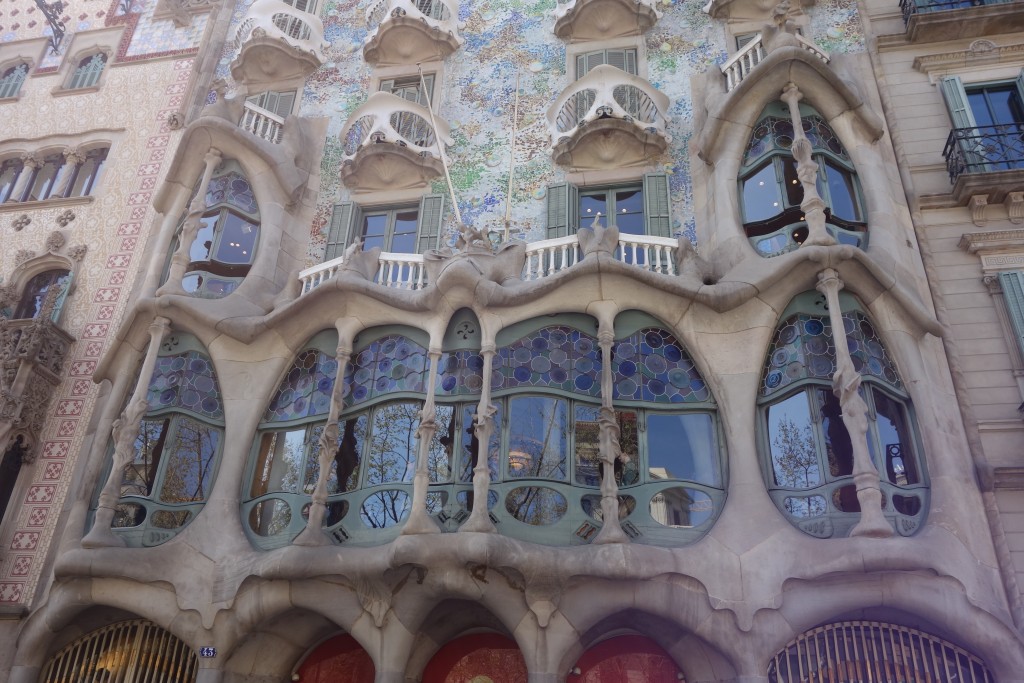
Casa Batlo 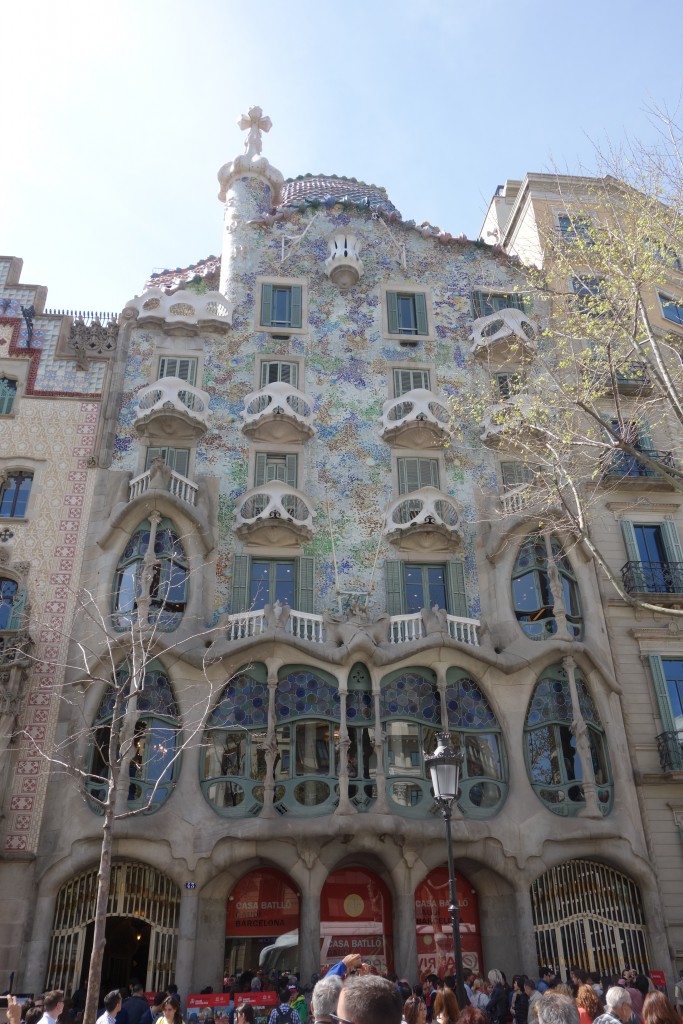
Casa Batlo
By way of architectural musings: during our walk through downtown, I could not but notice some common features in all the beautiful buildings populating the city. Where Verona was distinguished and united by balconies, Barcelona was definitely a city of windows. Long and vertical, decorated with wooden shutters of all forms and colors, they made the buildings look more open and slim, reaching for the skies like city trees deprived of sunshine.
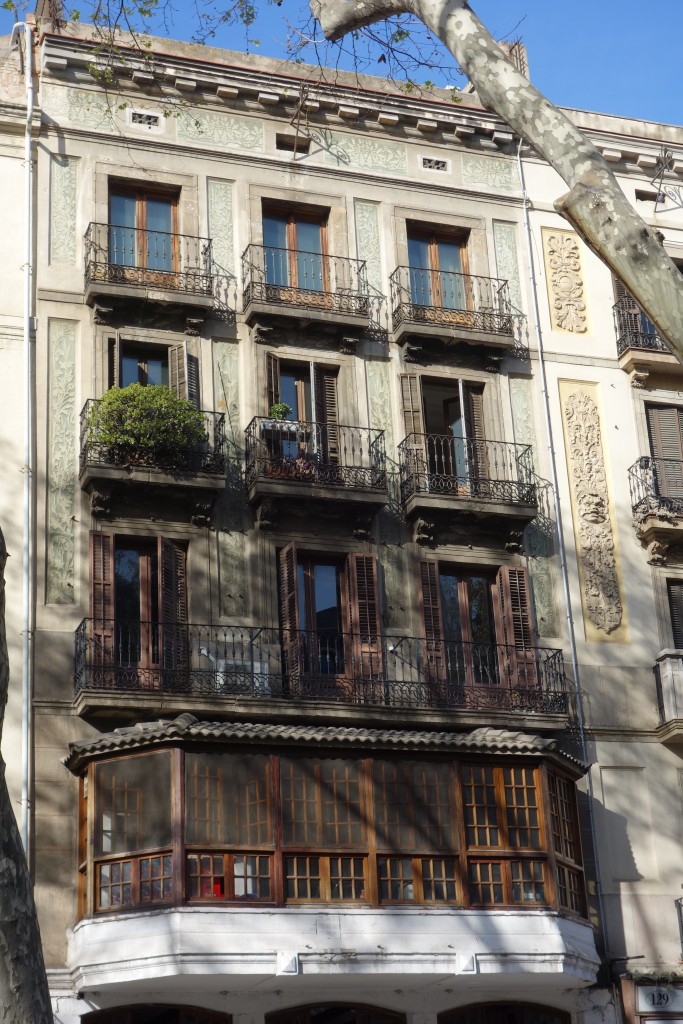
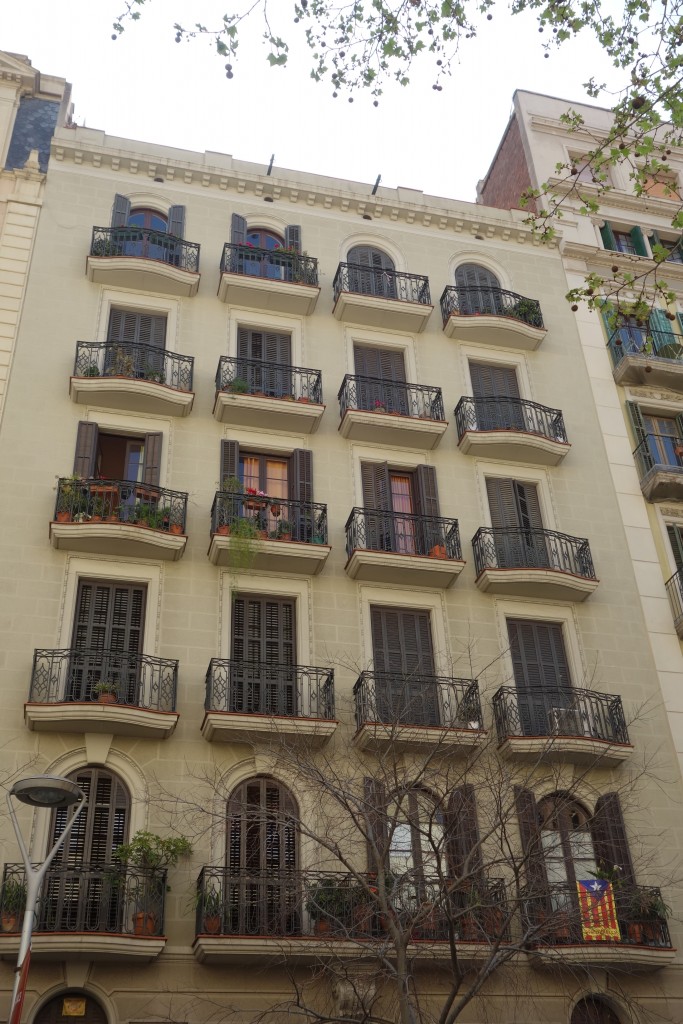
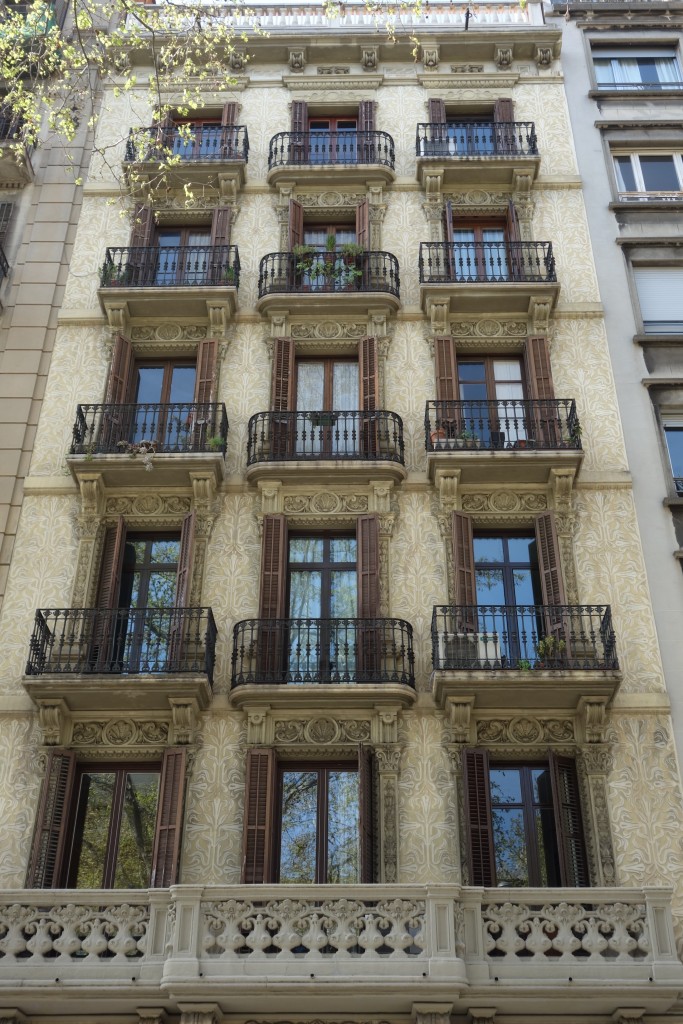
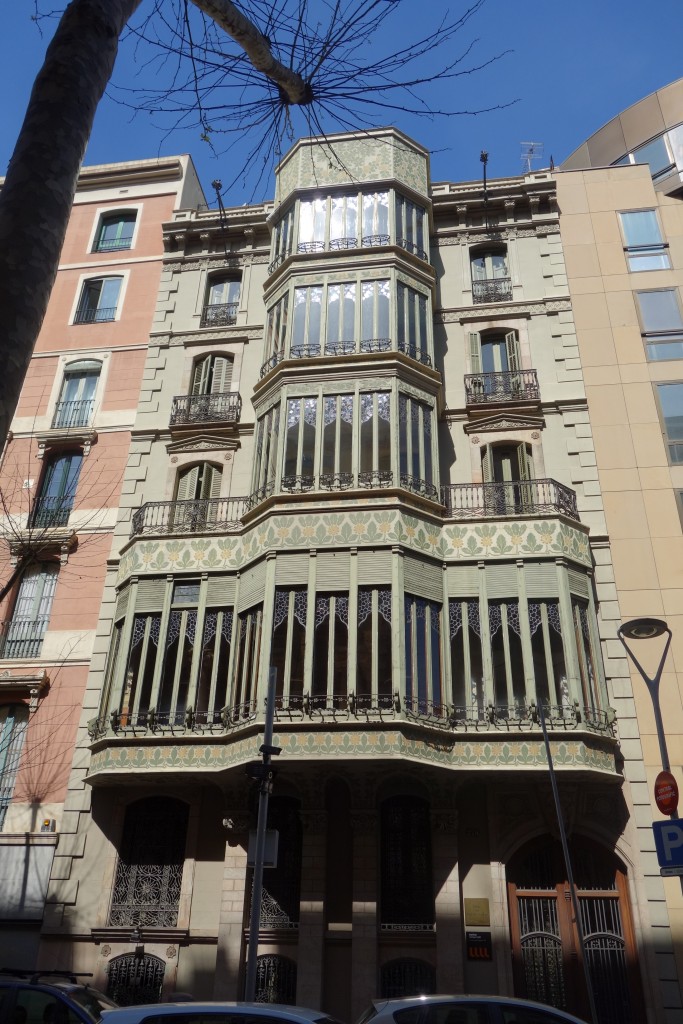
Palau del Baro Quadras 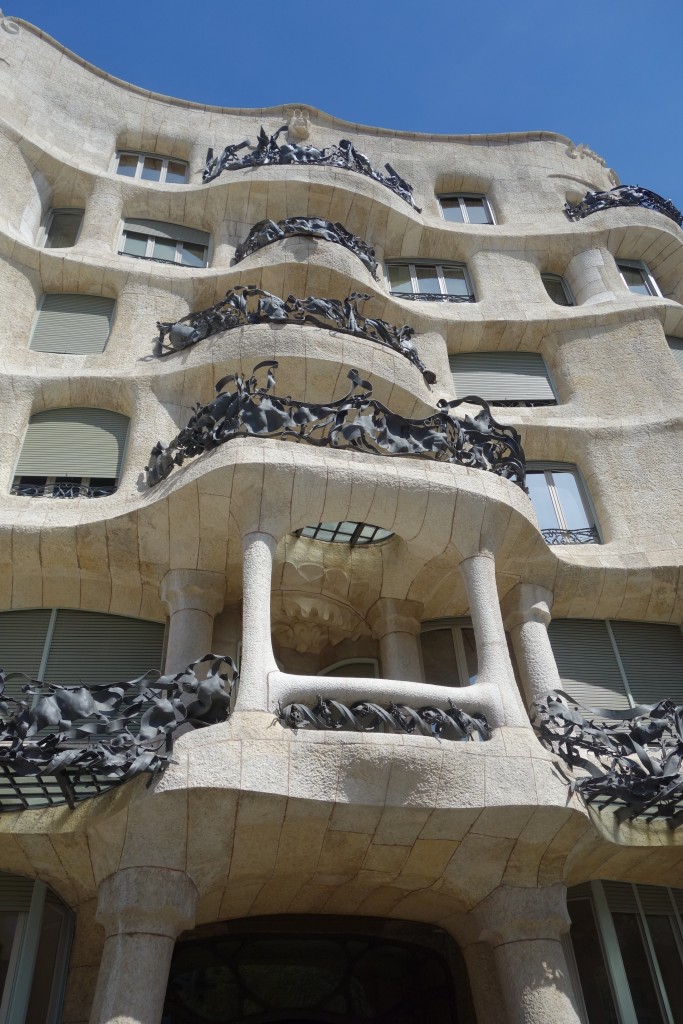
La Pedrera 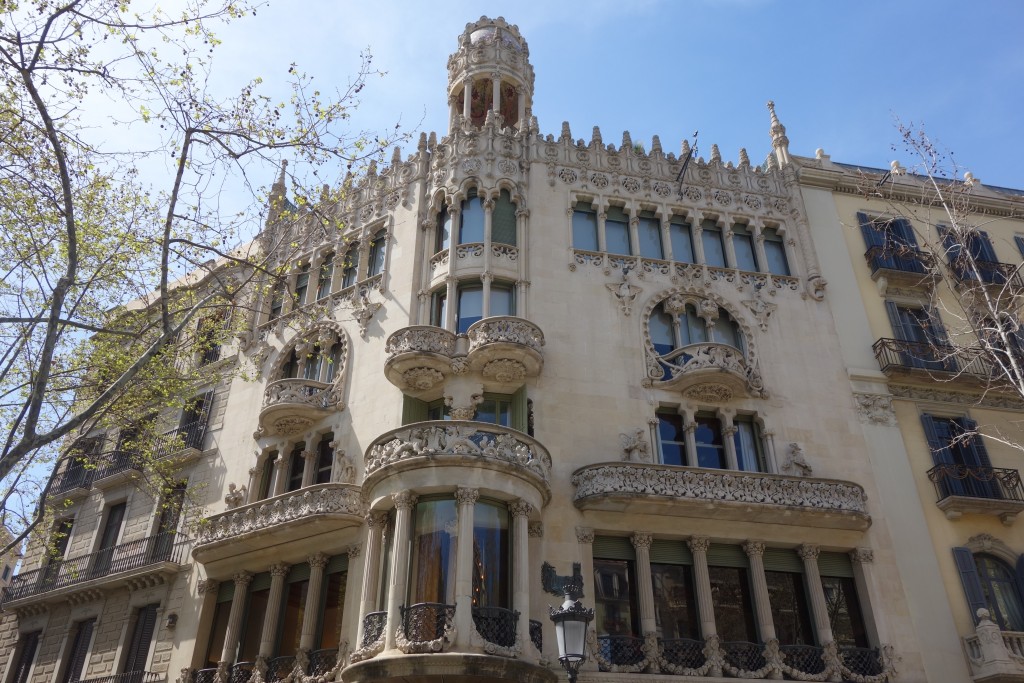
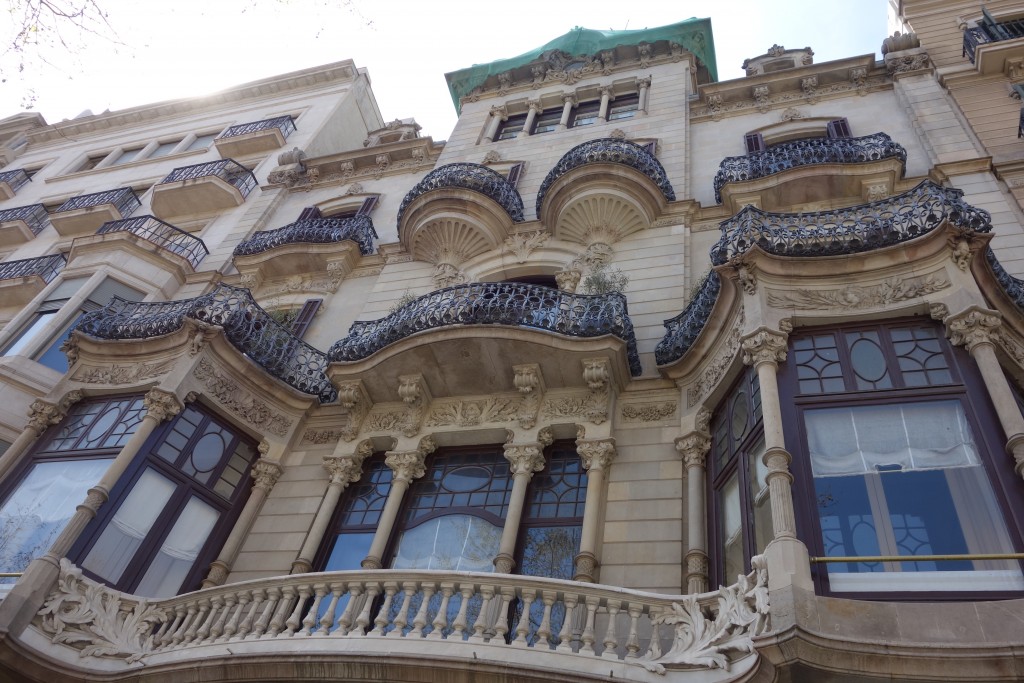
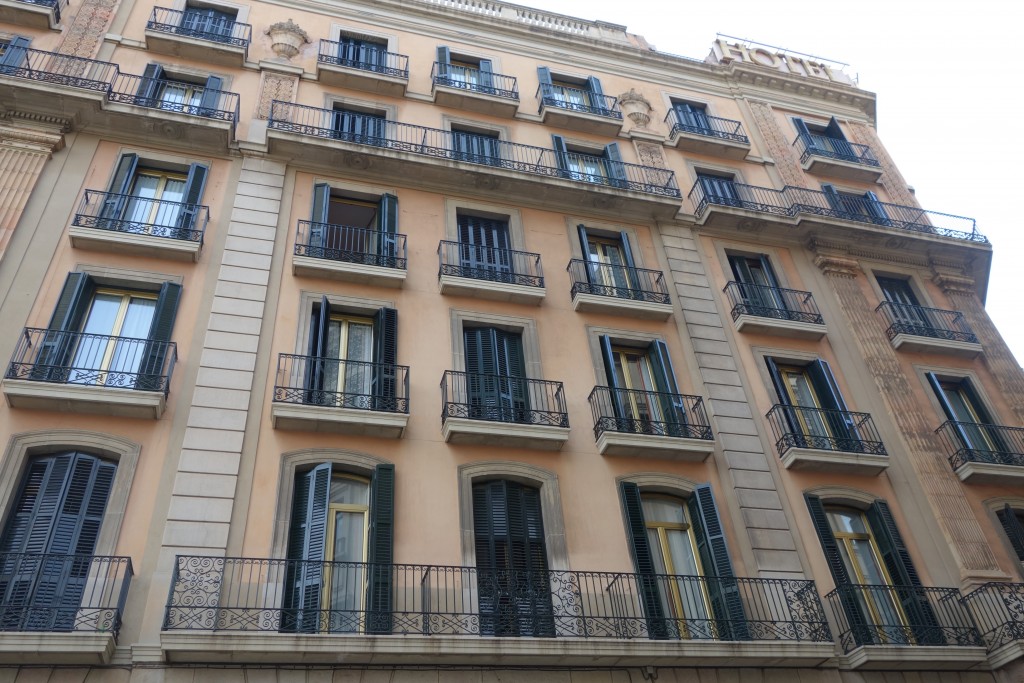
We seemed to have been the only ones, straying off the beaten path – our walk through the side streets and forgotten alleys was mostly solitary, with barely a tourist in sight. However, every time we came out into the opening or crossing marked by a famous sight, it was so besieged by fellow-travelers, patiently queuing in endless lines around it, that we had to turn away in frustration mixed with disgust.
The only place we managed to get in that day was La Cathedral (aka the Barcelona Cathedral), that in addition to its beautifully Gothic architecture boasts its own garden in the yard, with flowers, palm trees, a fish pond full of koi and a flock of 13 white geese proudly residing on premises.
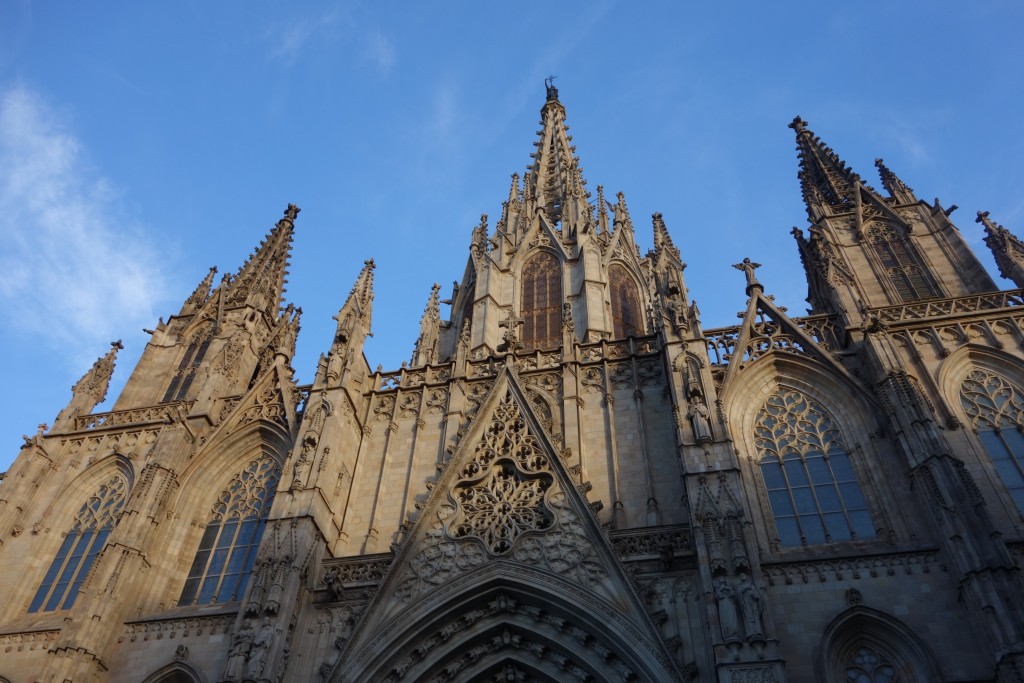
Beautiful and unique as downtown Barcelona is, with its phantasmagorical art nouveau buildings and mysterious-looking streets and alleys, the strongest impression of the day and our whole trip was yet to come. We happened to be in the city at Easter, and although we briefly read somewhere about Catalan Easter processions, we could not, in our wildest dreams, imagine just how gorgeously creepy and magnificently scary they were!… But all in its turn.
Aimlessly walking around downtown in the late afternoon, we stumbled upon the first, most regular-looking one of all. The clergy of the Barcelona Cathedral, serious, yet cheerful-looking, all dressed up to the nines, were taking Jesus for a walk around the block. Jesus was relaxing on a huge cross, towering over the crowds. The priests of varied ranks, were marching in slow and dignified order around the cathedral, stopping every now and hen to give the crowds an opportunity to cheer, pray, cry, or sing, according to their tastes and inclinations. The procession was stylish, dignified and despite the guy on the cross had an overall positive mood.
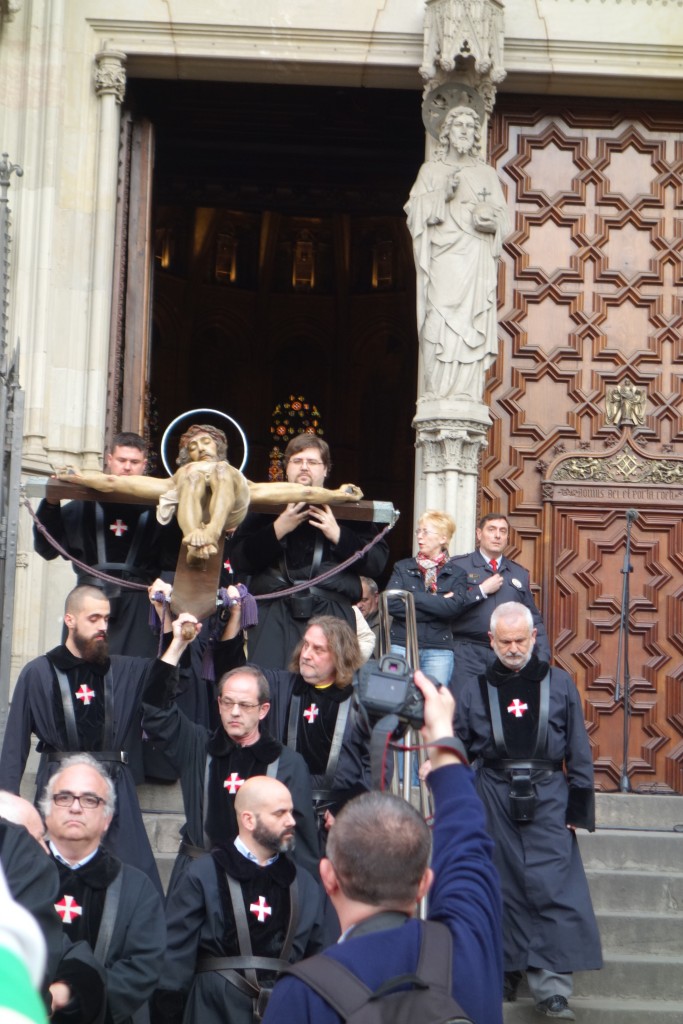
Procession #1 getting ready 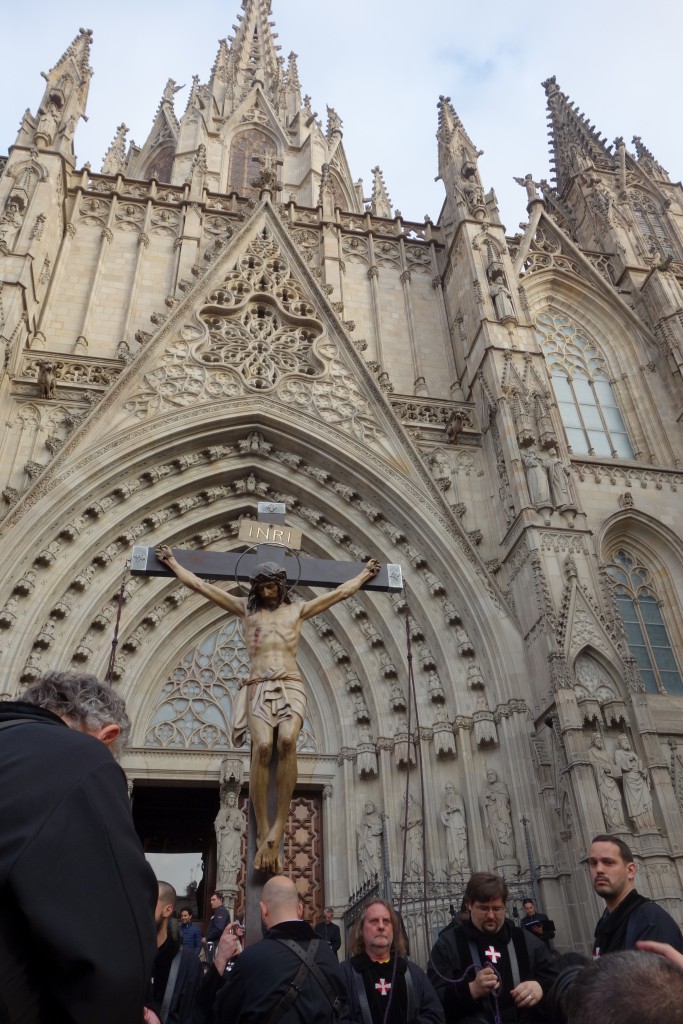
Procesion #1 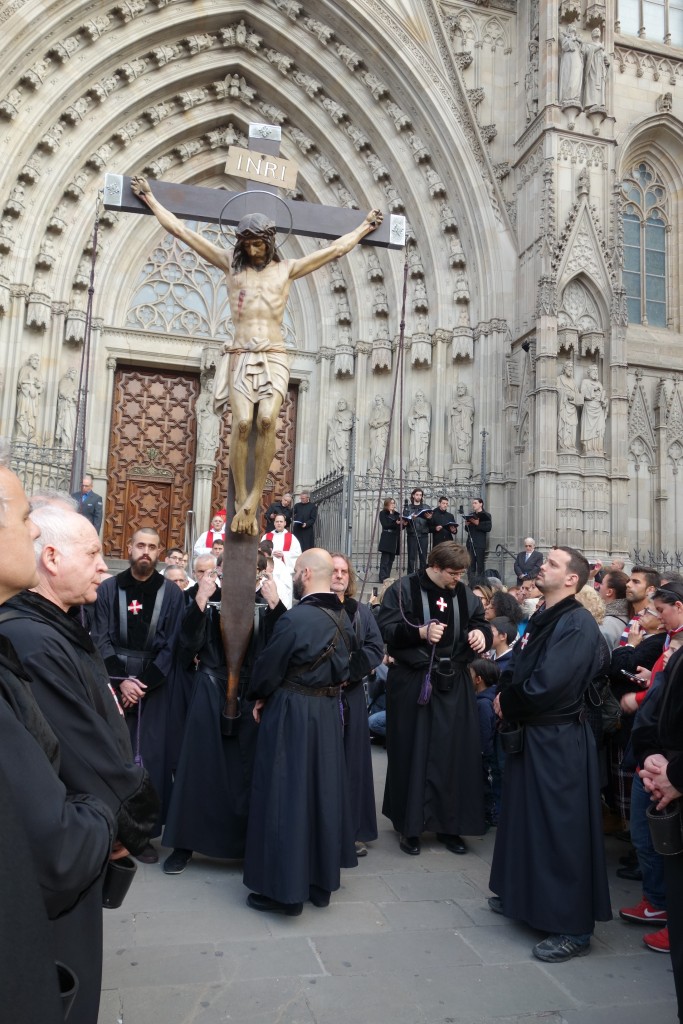
Procesion #1 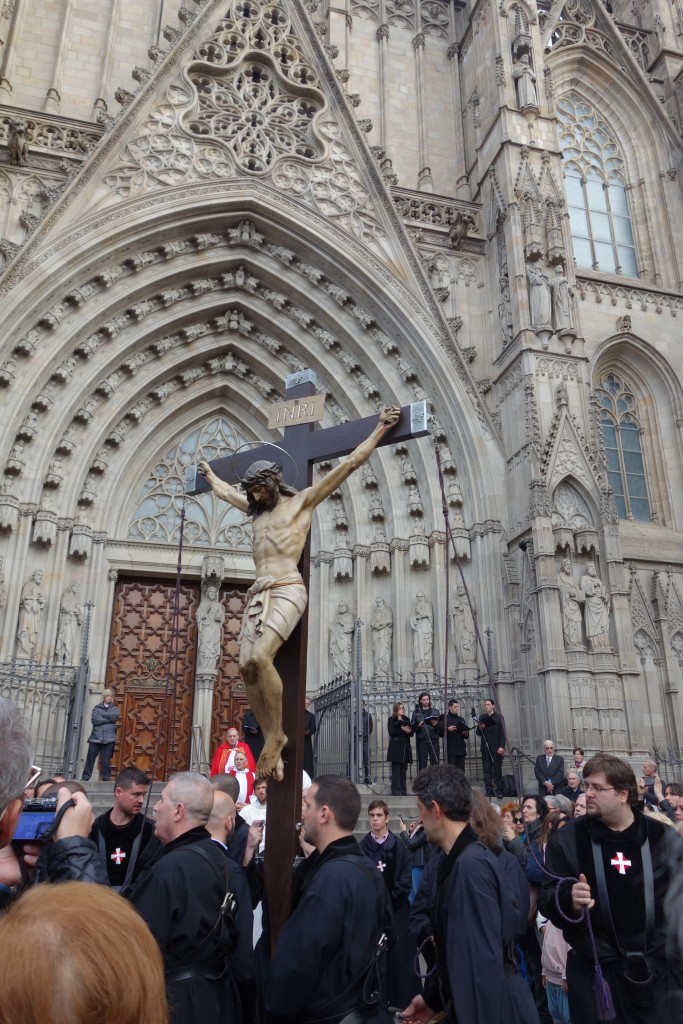
Procesion #1 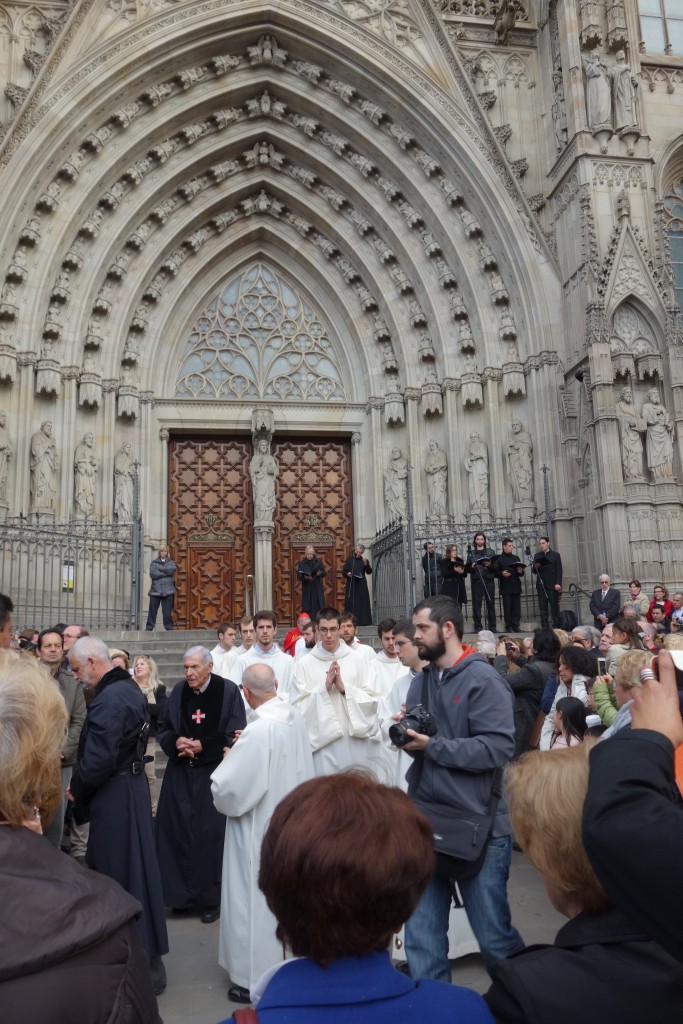
Procesion #1 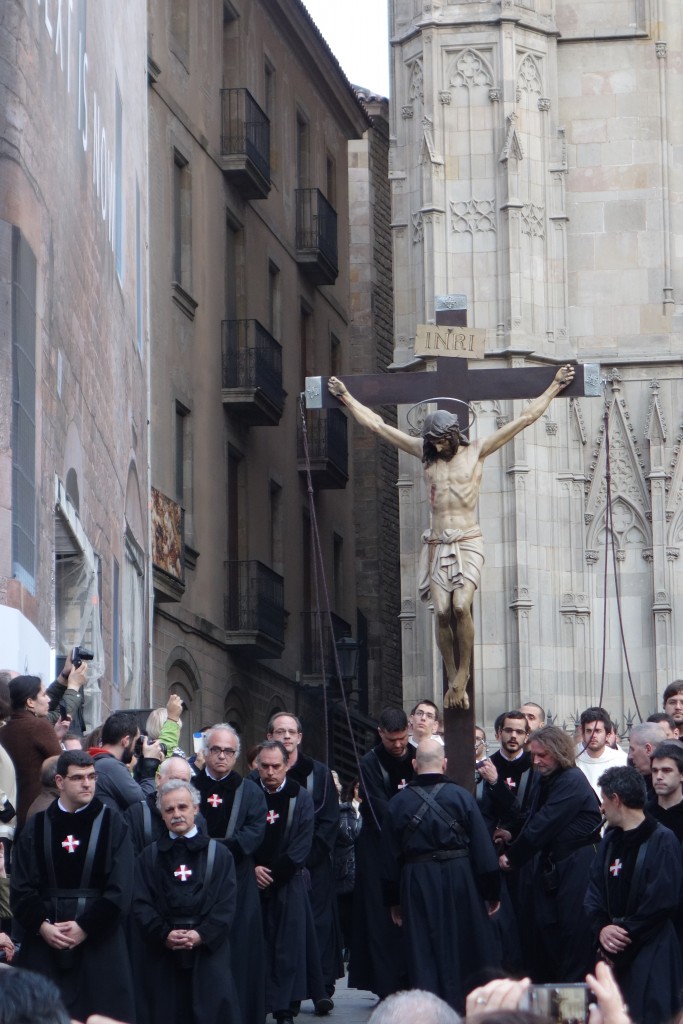
Procesion #1
Cheerfullness did not last long. The second procession we caught up with while exploring the neighborhood alleys was headed by an oompa-band playing funeral marches, followed by severe-looking Catalan women, in black clothes and high head dresses, carrying tall body-size lit candles and hugging gold-encrusted Bibles to their chests. Behind them moved a maxi hearse made entirely of flowers, on top of which the statue of Mary Magdalen dressed in what looked like bridal gear was hugging the dead and bloodied body of Jesus. The dead body looked a bit too realistic to my taste, but the crowds gathering the procession did not share my sentiment – everybody was gushing simultaneously, and taking selfies with iPads… Upon closer inspection the hearse turned out to be hollow inside, and carried by on shoulders of a dozen or so people guiding the thing from the inside. This was only the beginning of the fun, though. The hearse was followed by a festive-looking Ku-Klux-Klan gathering in black dresses and purple cassocks with only little holes for the eyes. They were silent and concentrated, carried heavy lanterns, and included both, grown-ups and children, all in black and purple clan gear. In the falling twilight, walking slowly and solemnly along the narrow dark alleys of a medieval town, the procession looked freakishly weird.
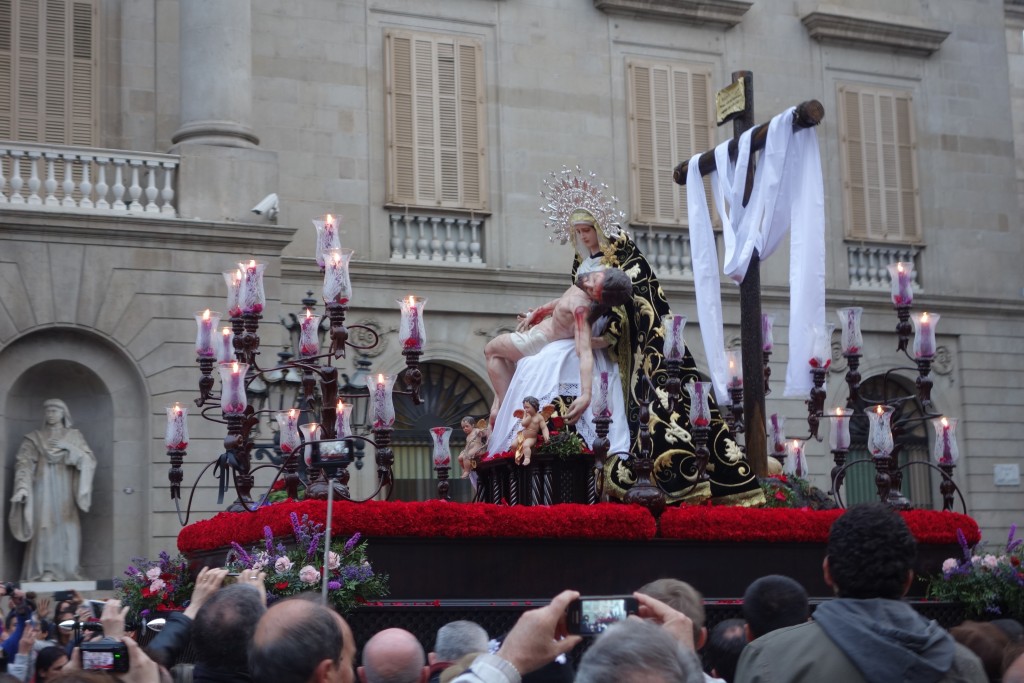
Procesion #2 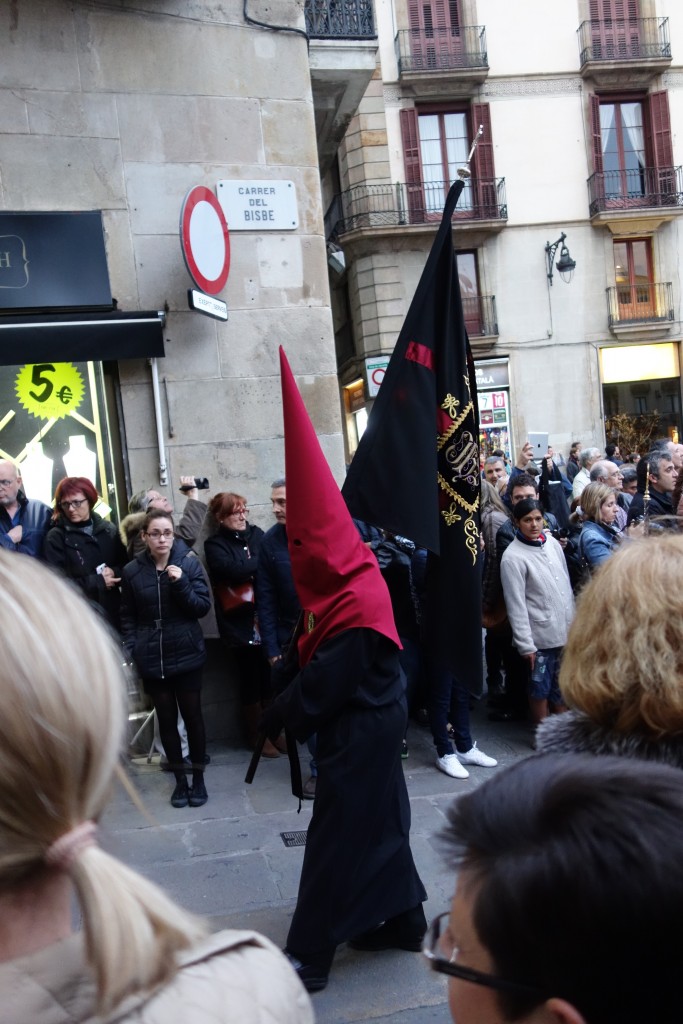
Procesion #2 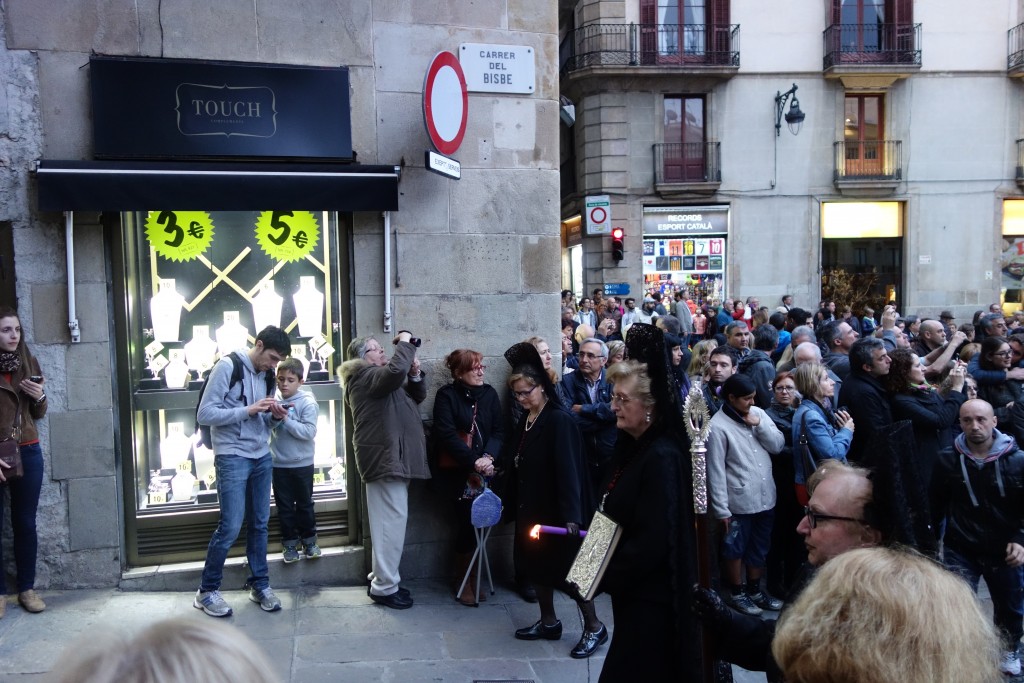
Procesion #2 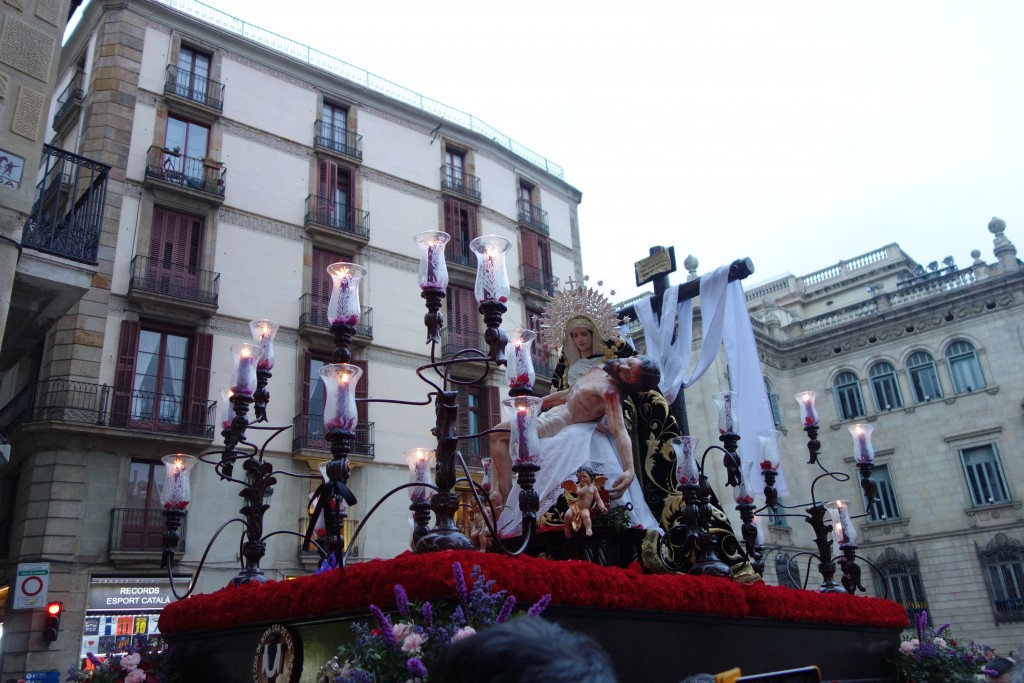
Procesion #2 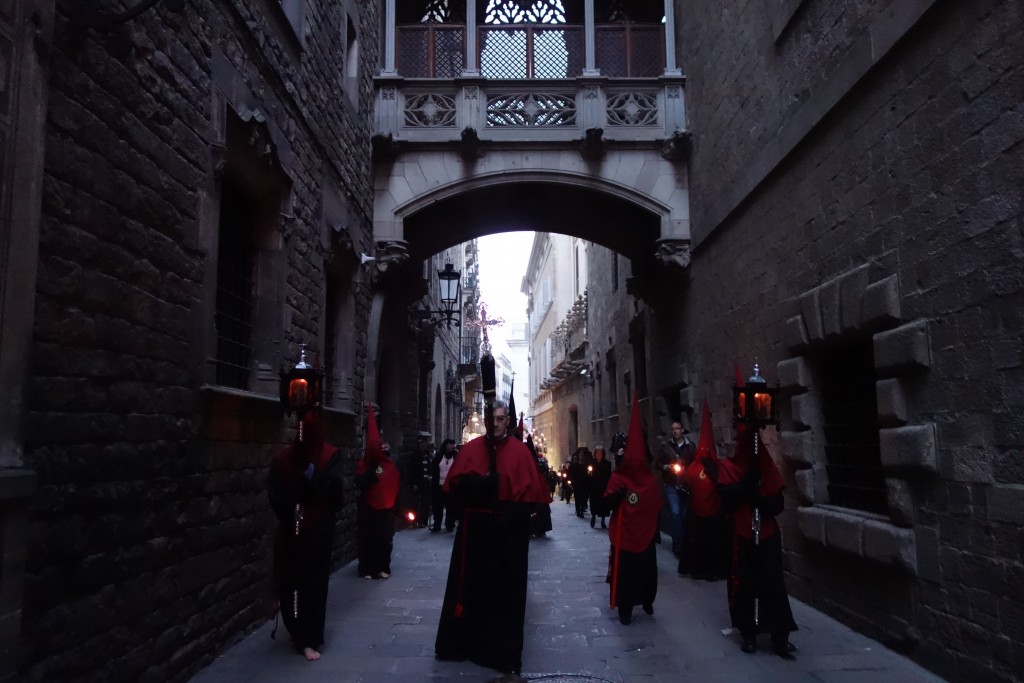
Procesion #2 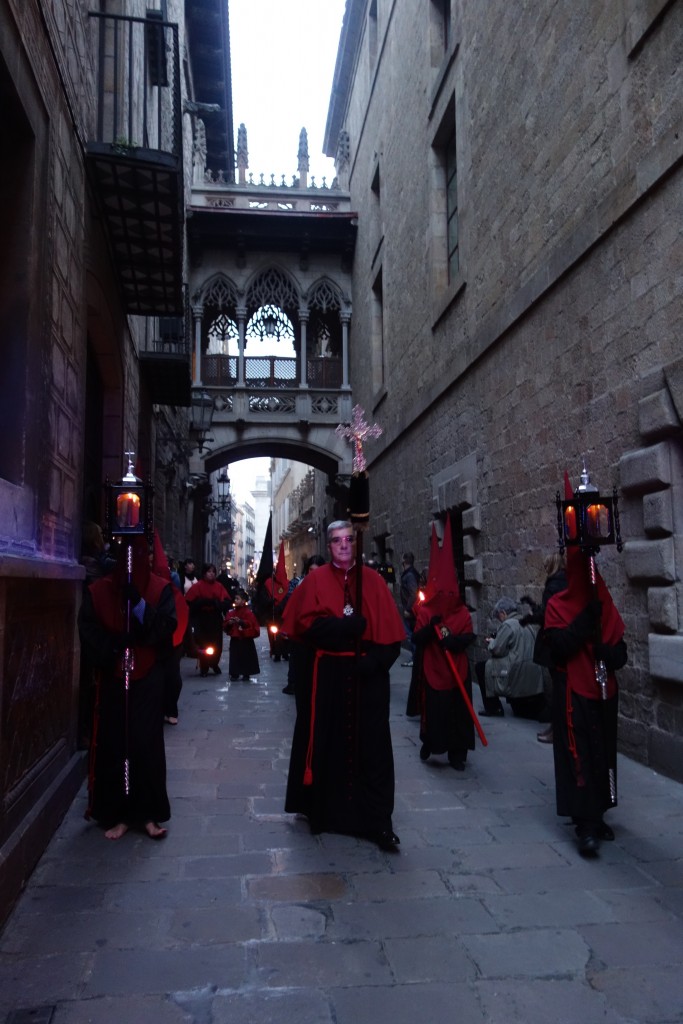
Procesion #2 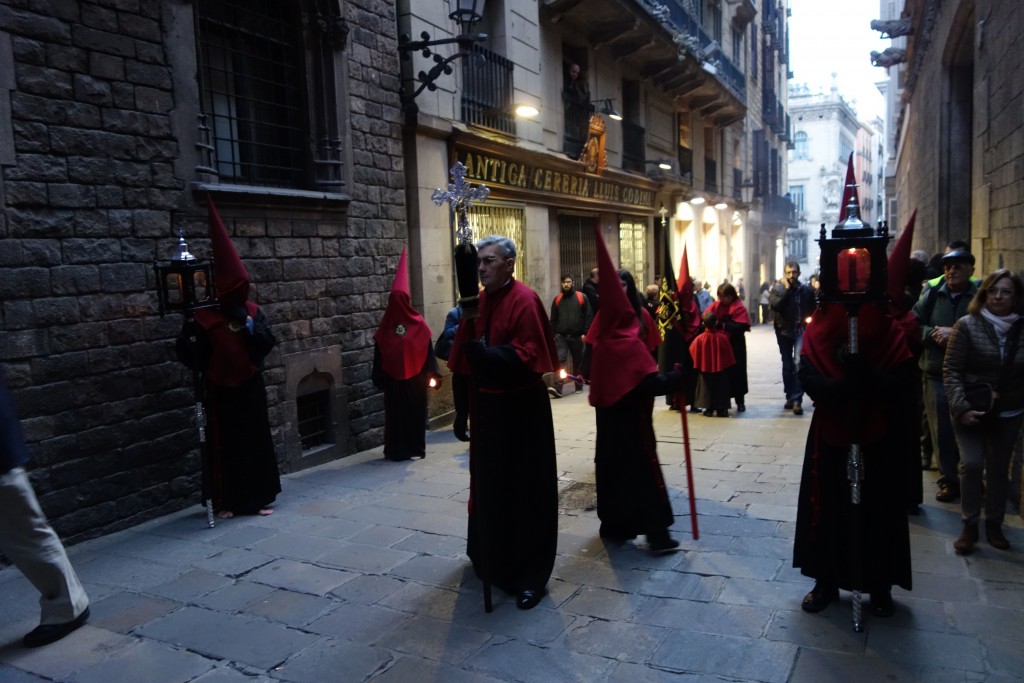
Procesion #2
Following the Klan group in a mesmerized admiration, we walked back into the main square, where thousands of people gathered to greet the third and the biggest procession of all. This one was made up of two walking hearses at a respectable distance from one another. The procession was headed by scary-looking group of a couple of dozen men dressed in black pointed cassocks with little slits for the eyes, all carrying torches or lanterns. Judging by the air of authority, they seemed to be the higher-ranking members of the same medieval Ku-Klux-Klan revival, and looked like they meant business. By now the twilight thickened, and the black figures looked especially menacing and spooky.
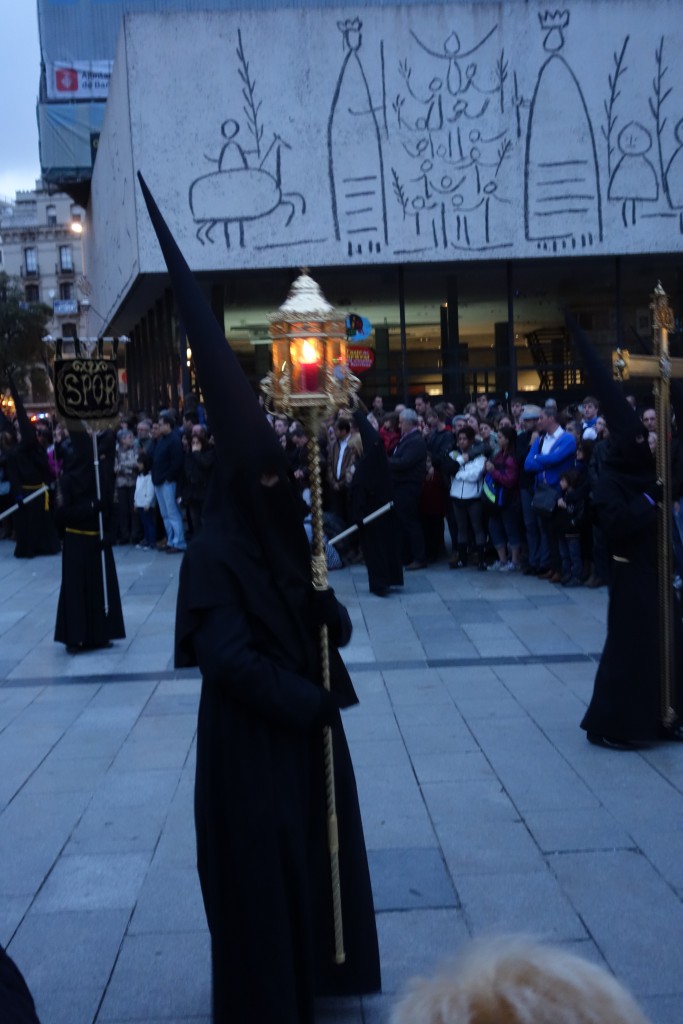
Procession #3 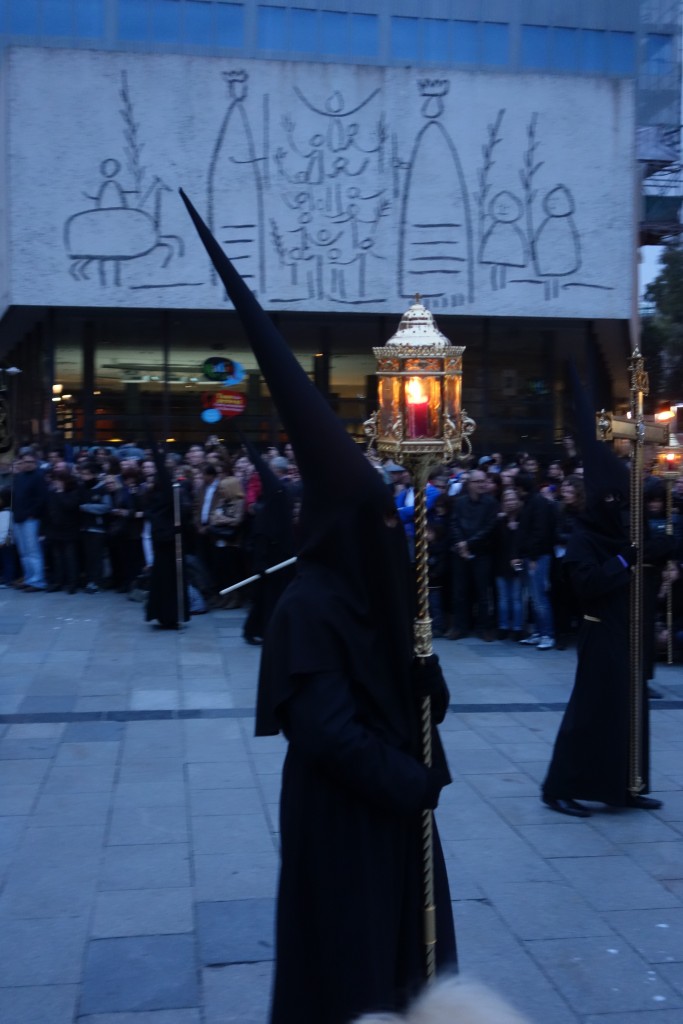
Procession #3 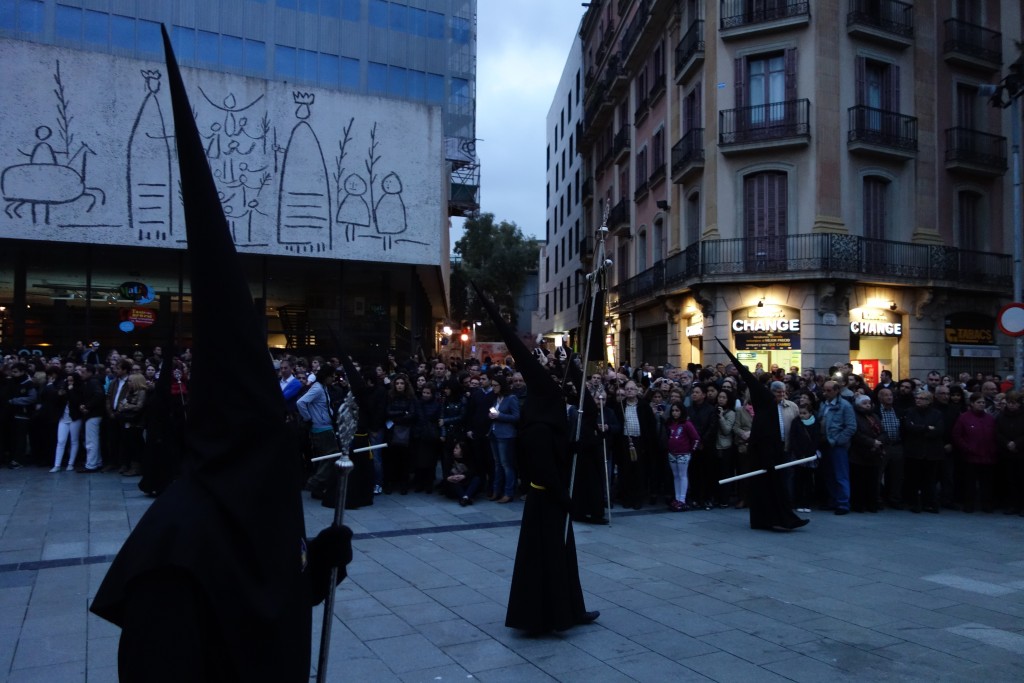
Procession #3 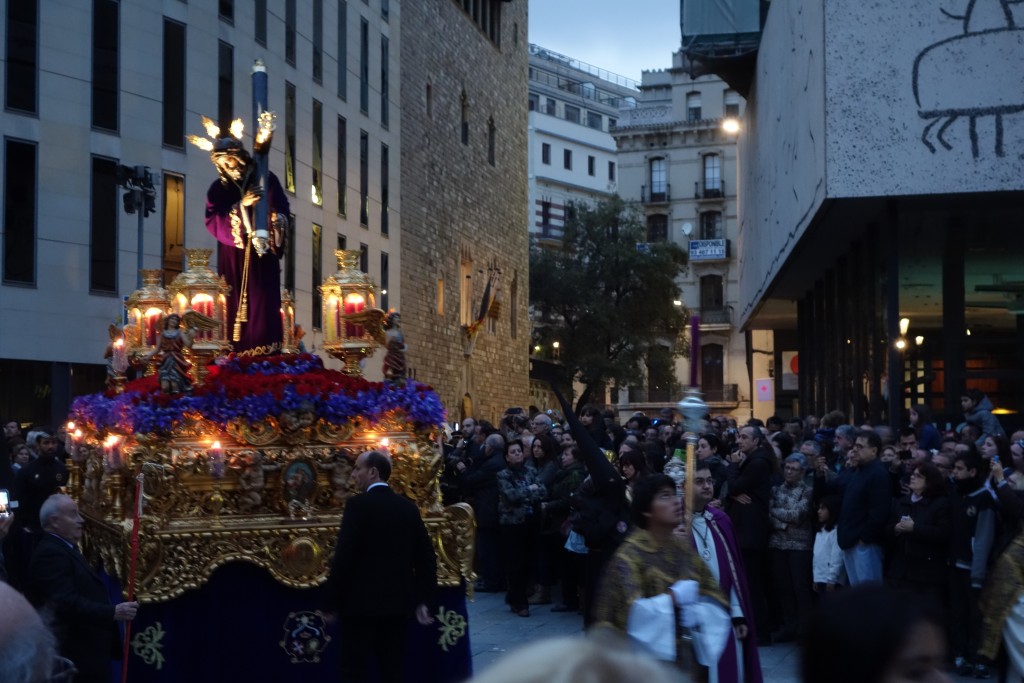
Procession #3 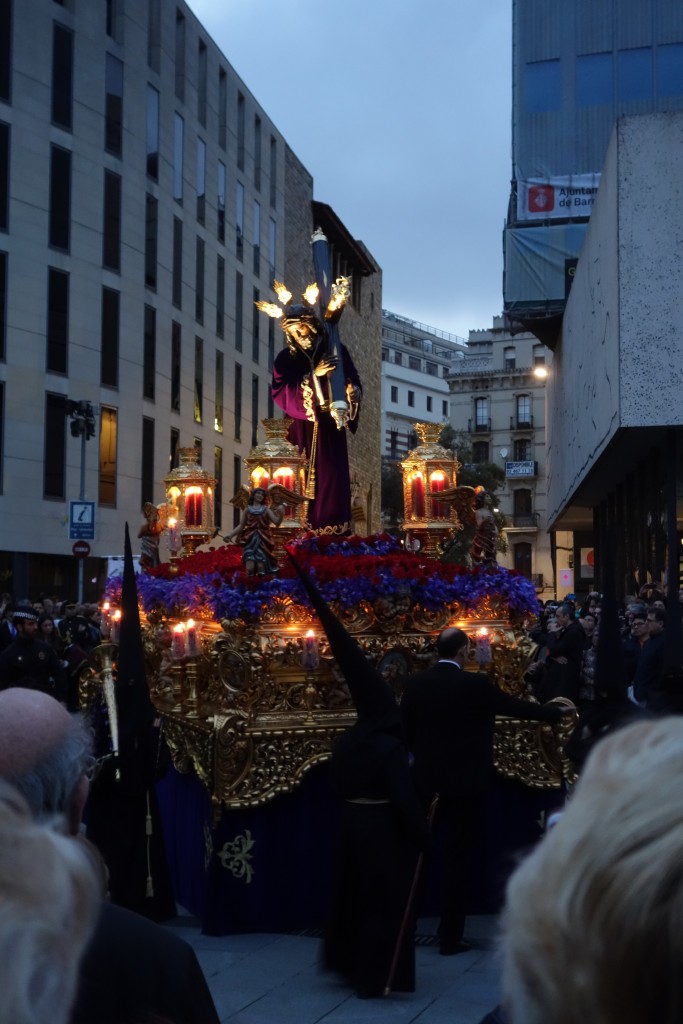
Procession #3 
Procession #3 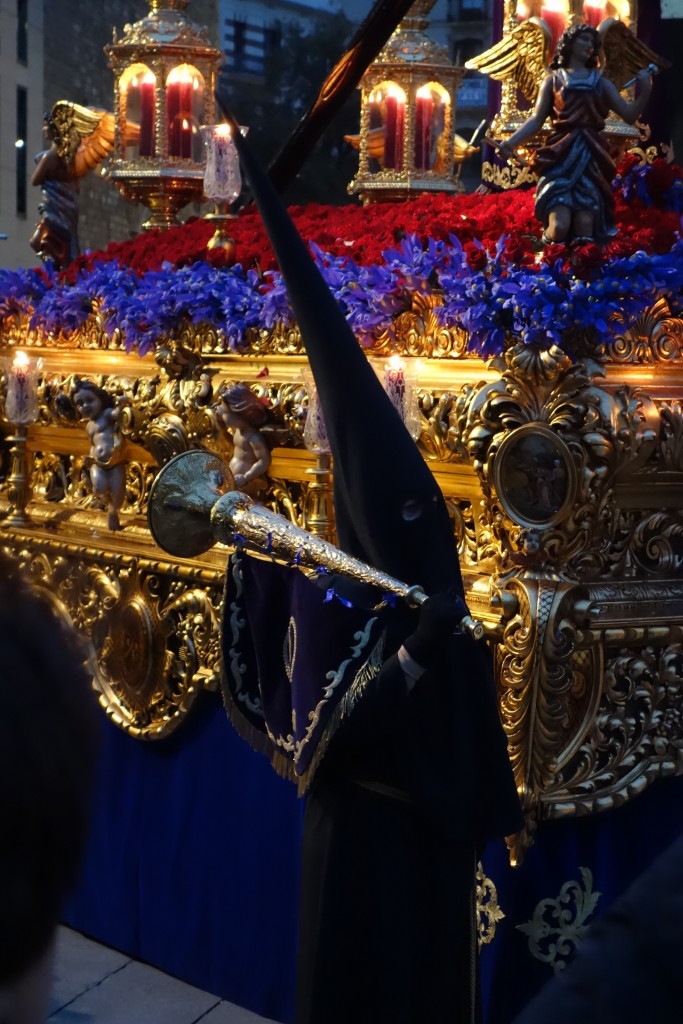
Procession #3 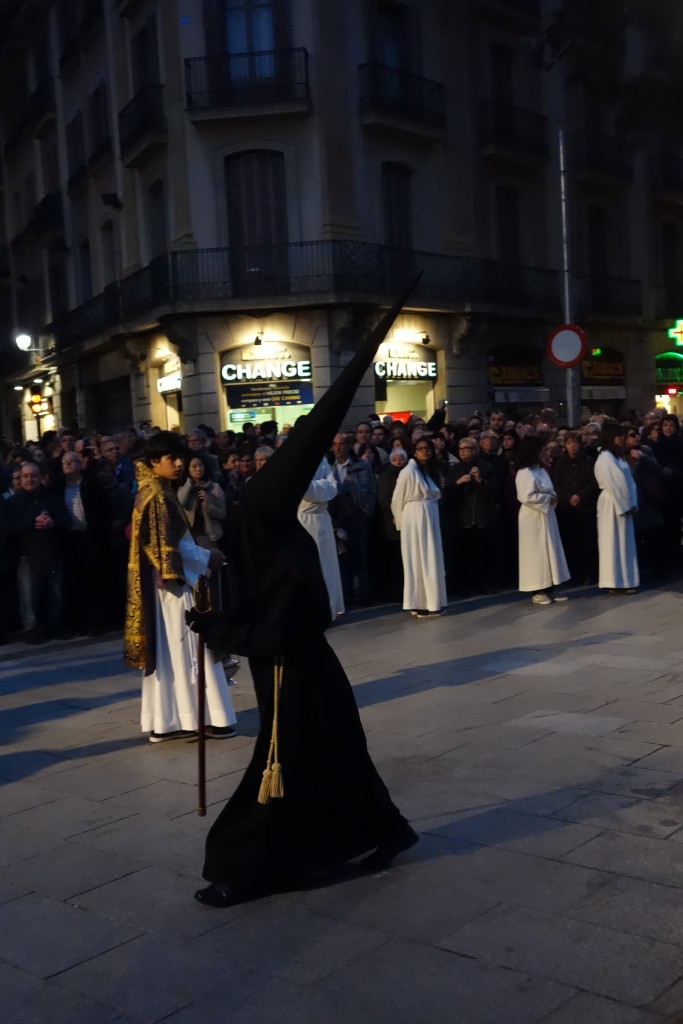
Procession #3 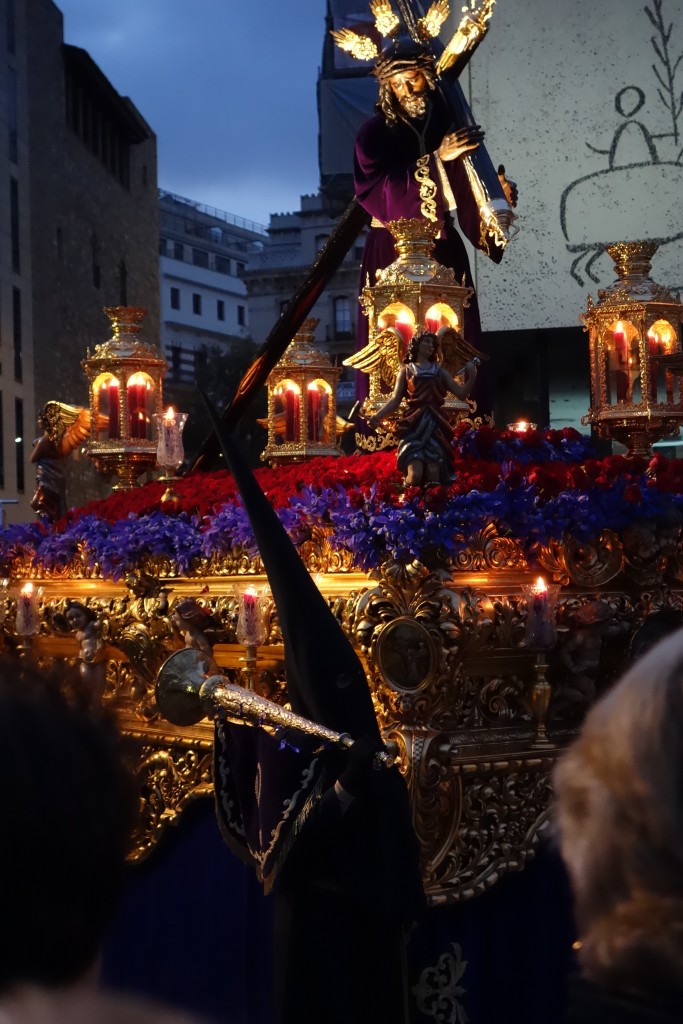
Procession #3 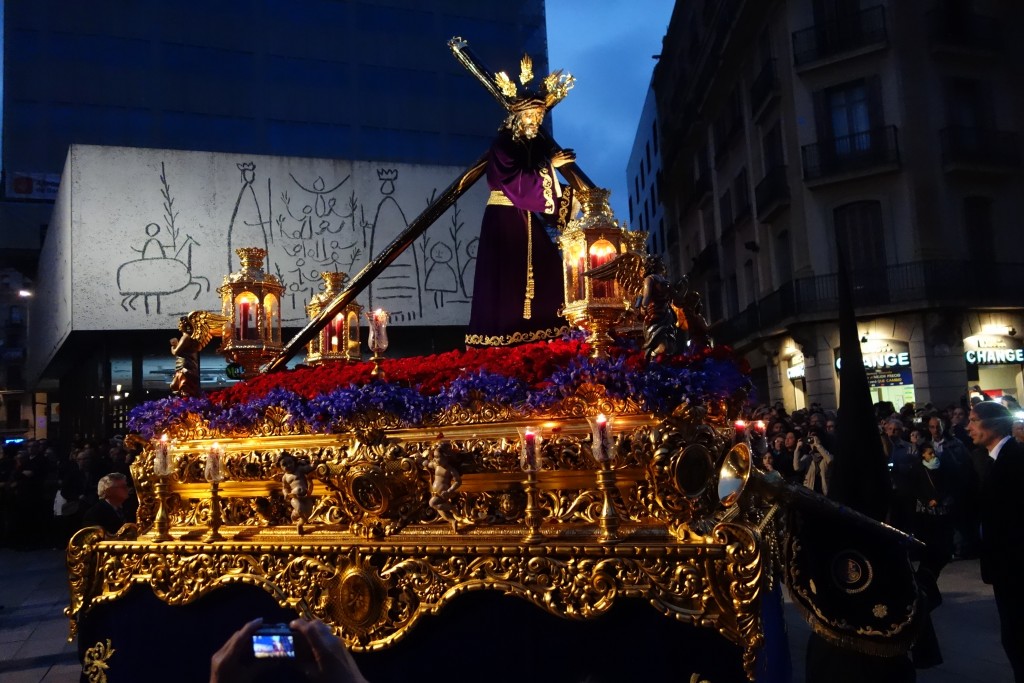
Procession #3
The first hearse of the final procession was a lushly decorated golden flower-bed with the statue of Jesus in a crimson robe carrying the cross on top.
Right behind it a group of middle-aged and elderly women, dressed in black robes, was walking barefoot and in chains, each carrying a decent-size wooden cross of their own on their backs. A couple of women were also making simultaneous attempts at flogging themselves with whips they happened to have handy.
They were followed by yet another group of Klan guys – these in white robes with dark green pointed cassocks, followed by the main attraction of the evening – the last hearse that looked like a cross between a throne and a bed. It was made of what looked like heavy gold, decorated with white flowers, and filled with candles. Amid all this luxury sat a big figure of Santa Macarena, or the Catalan version of the Virgin Mary. Suspiciously Mary was wearing a bridal dress and a golden halo crown, although, I am by far not an expert on Catholic Easter traditions…
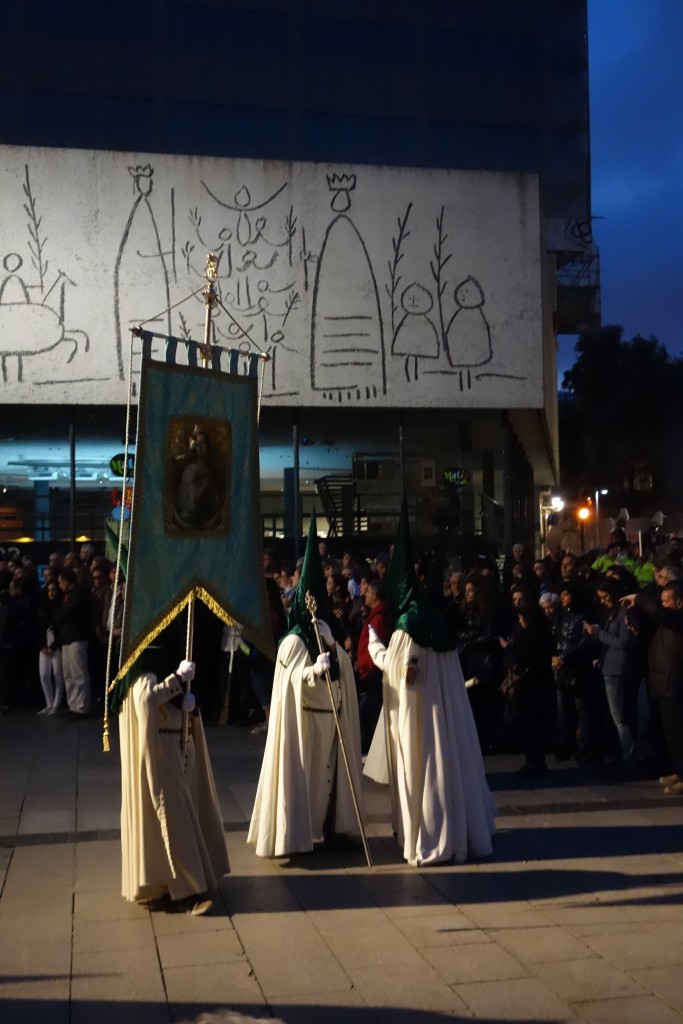
Procession #4 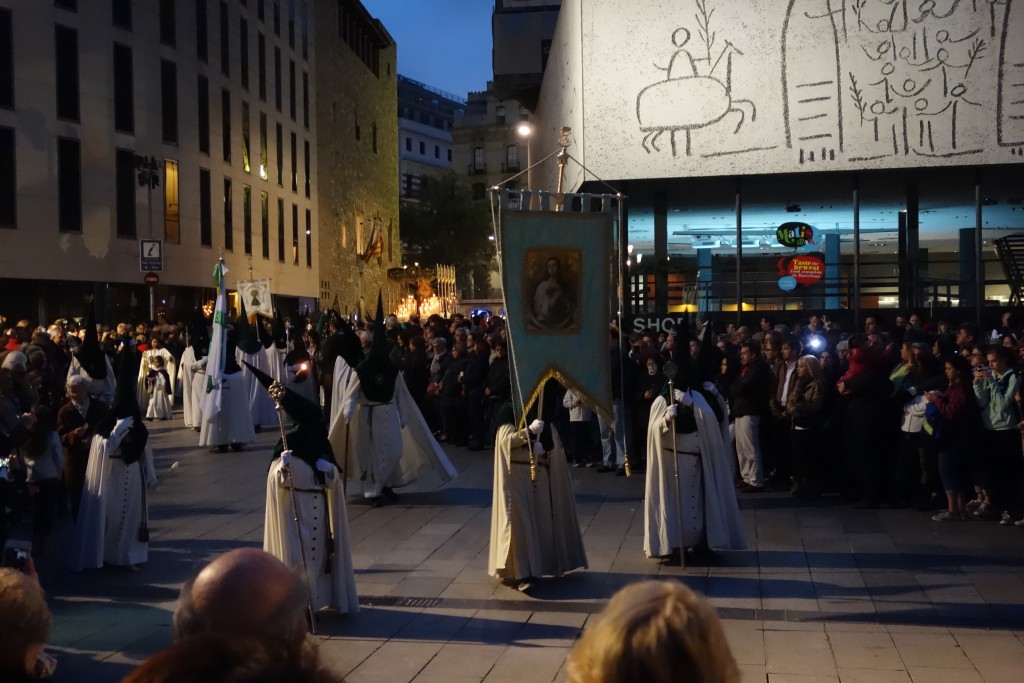
Procession #4 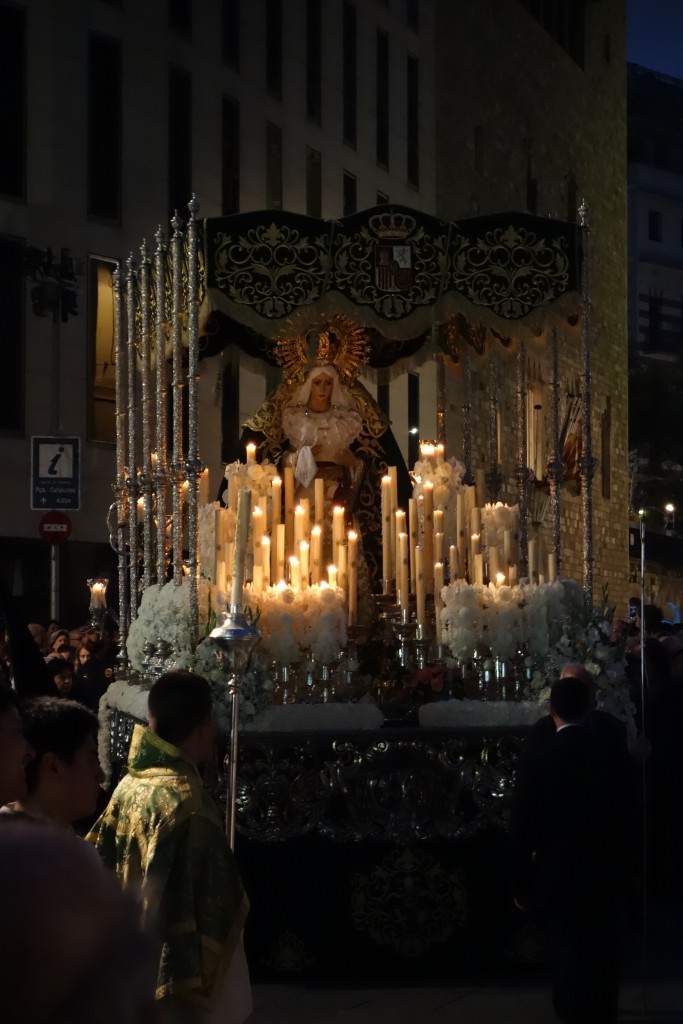
Procession #4 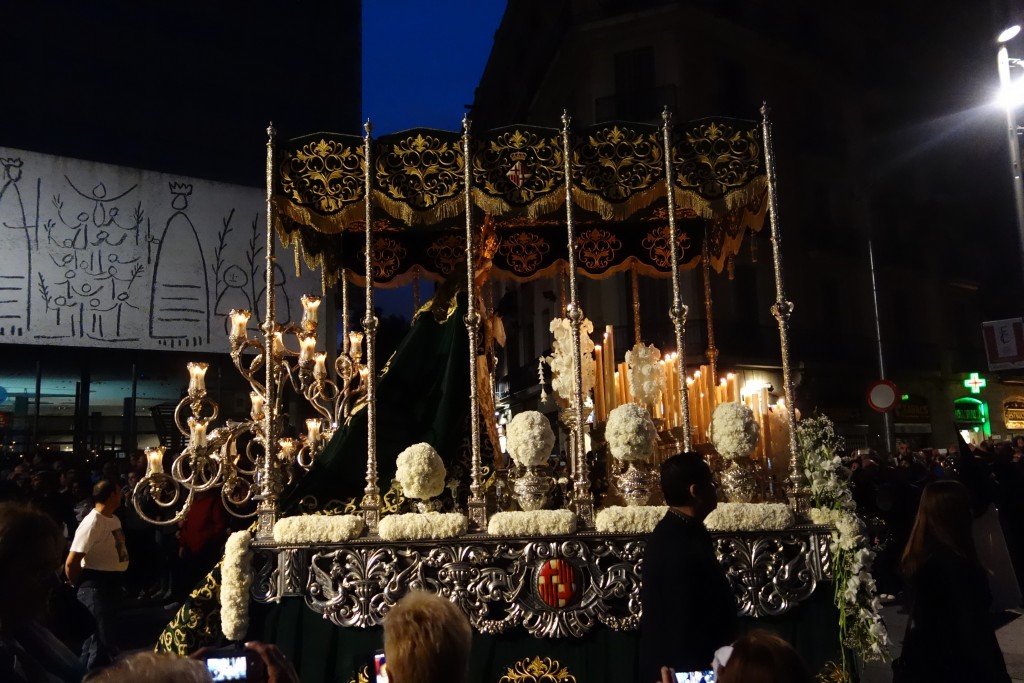
Procession #4
Looking at the processions in the quickly thickening twilight, you could not help but think that a sight of cassocked men with torches and women flogging themselves with whips was probably the last thing you could imagine seeing in the middle of a 21st century European capital… This should definitely be on every self-respecting Goth’s list! Another one of the lesser-known weird sights of this world added to the bucket list of our collective experience…
